If you’re here, you’re probably wondering what there is to see on Tunisian Djerba. Let me share my impressions from a trip that started with this magical island. For me, Djerba is not only the beginning of an adventure through Tunisia, but also a symbol of perfect relaxation. Let’s start with the weather – sunny days are almost guaranteed here, even outside the season, making Djerba a perfect place for sunbathing and relaxation. Additionally, the island offers plenty of interesting attractions, picturesque places, and of course, delicious Tunisian cuisine.
Sounds like the perfect plan? I won’t prolong it, I just invite you to read about the island of Djerba.
Table of Contents
Djerba
Let’s start with the fact that Djerba is the largest Tunisian island, located in the Gulf of Gabes on the Mediterranean Sea. We can easily reach it directly from Poland, for example from Katowice or Warsaw. Djerba has a typical Mediterranean climate, which means it’s the perfect place to visit at any time of the year. It’s also worth mentioning that Djerba is connected to the mainland by a narrow causeway dating back to Roman times, and as you might expect, it’s an island with a truly long history. Moreover, since 2023, the island can boast an official entry on the UNESCO World Heritage List, which further emphasizes its cultural and historical significance.
Erriadh and the Djerbahood project
Have you heard of Djerbahood? In 2014, artists from all over the world gathered in the village of Erriadh on Djerba to create an open-air museum with over 250 murals. Moreover, this project is still ongoing, with many new murals being created. Many of them refer to Tunisian traditions. It’s a unique street art gallery and one of the most photogenic places I’ve had the opportunity to see! In addition to street art, Erriadh is full of bougainvillea, which is admired as much as the art itself. This artistic and social project has become a tourist attraction for Erriadh and continues to this day.
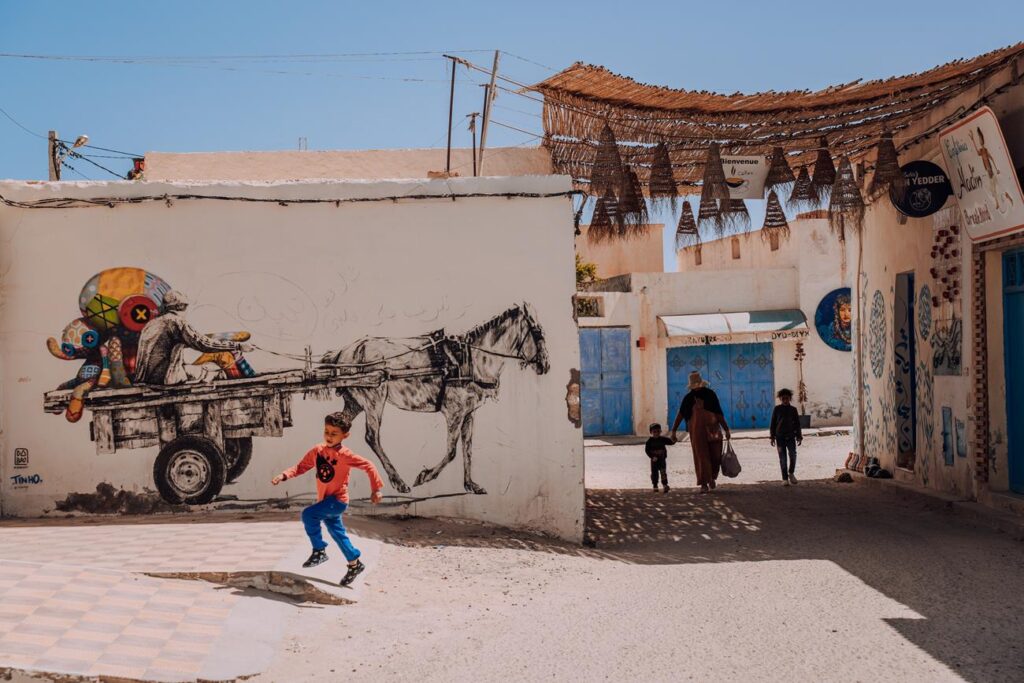
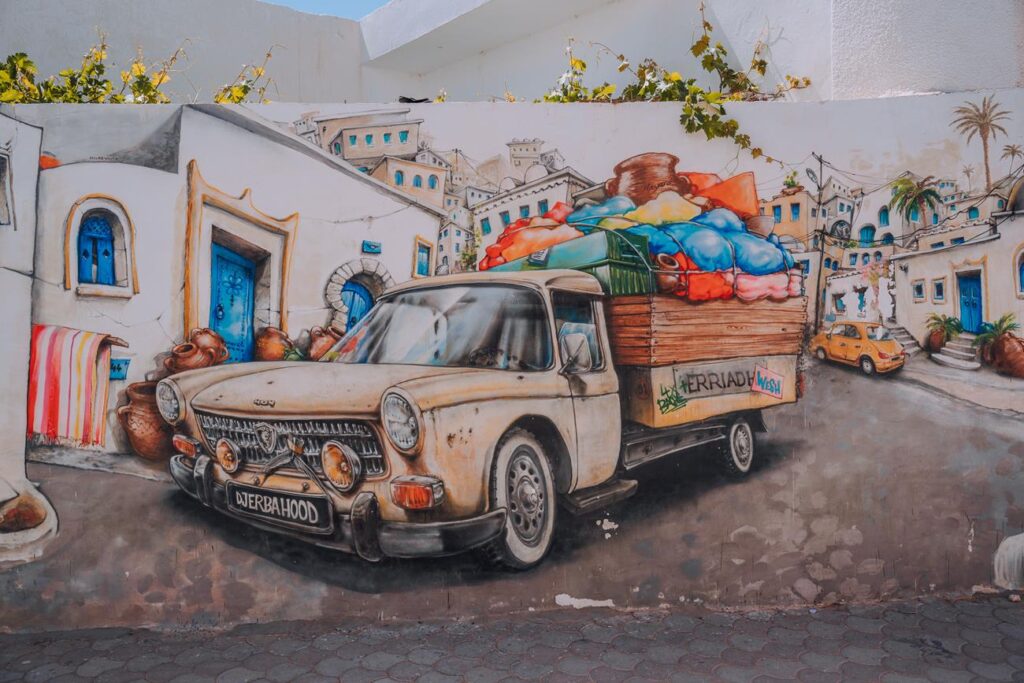
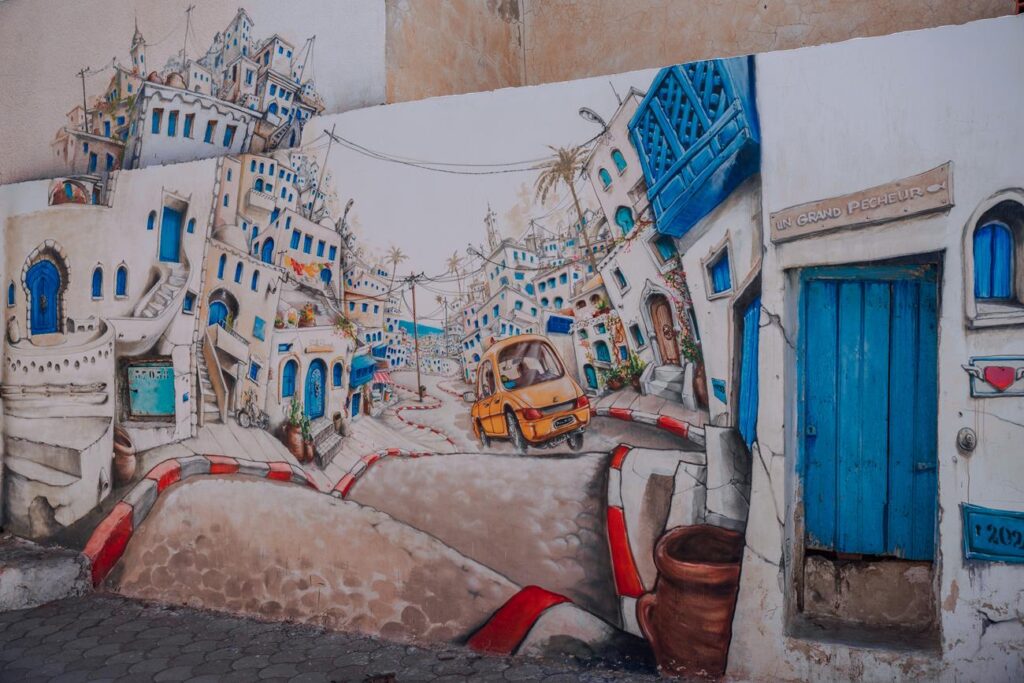
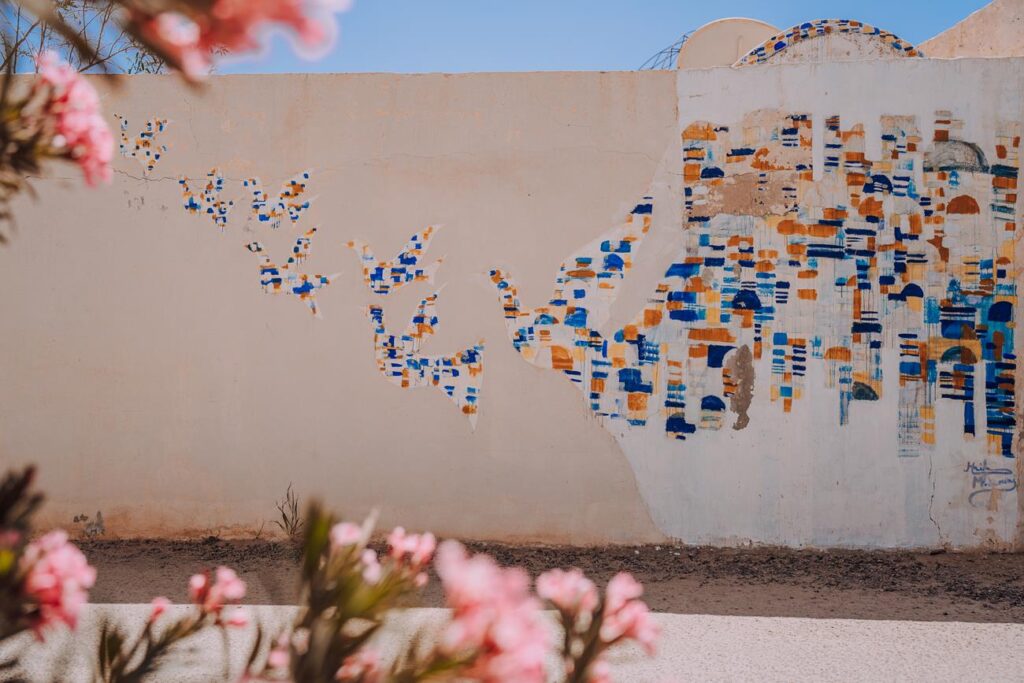
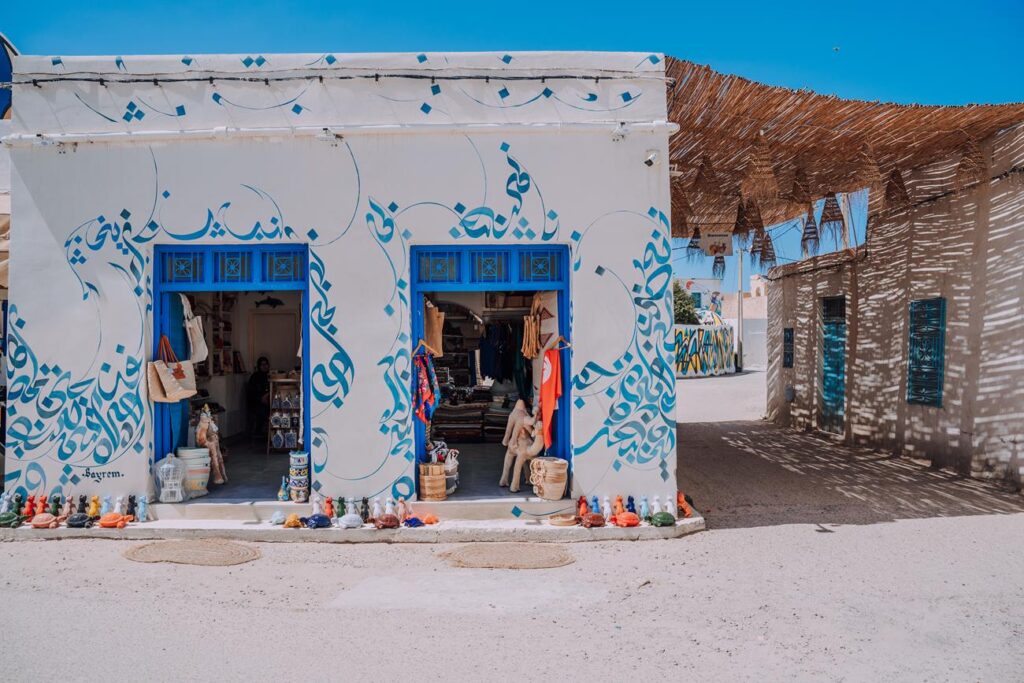
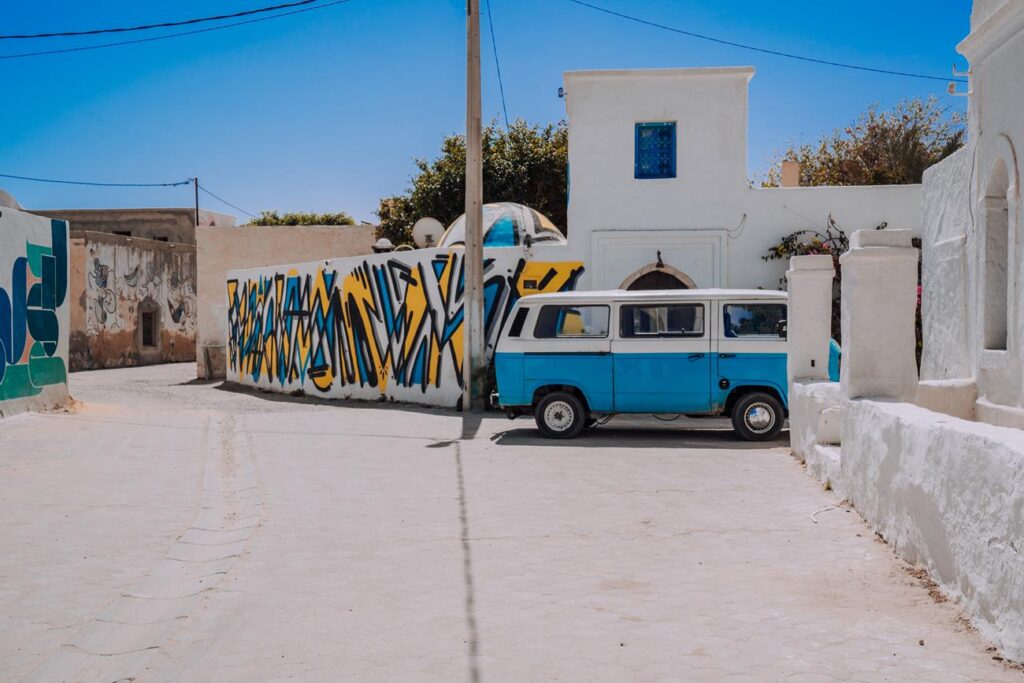
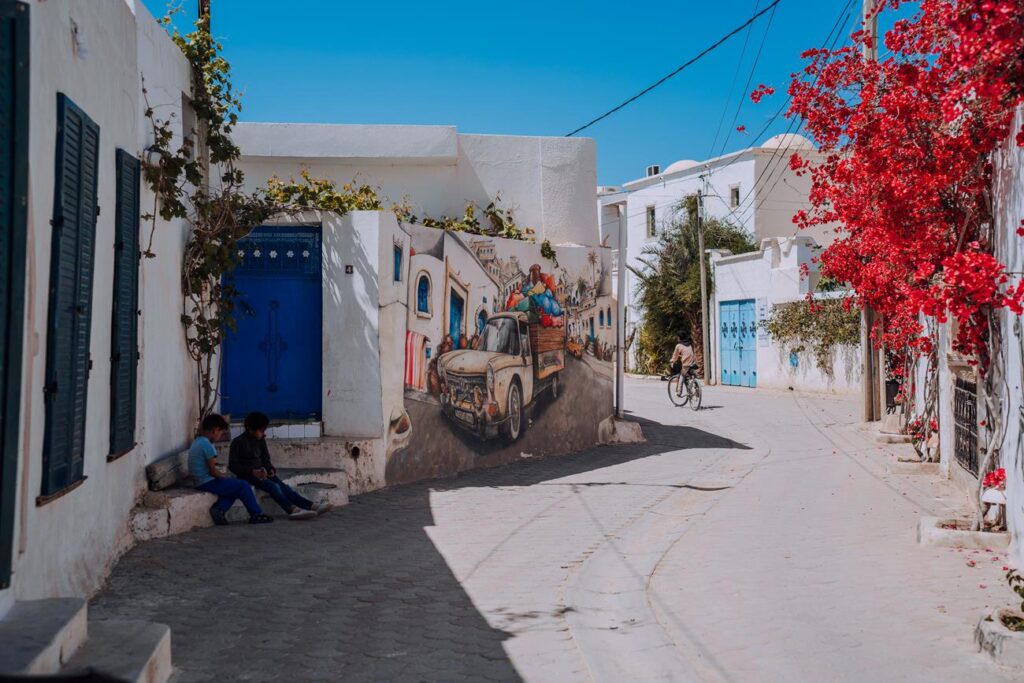
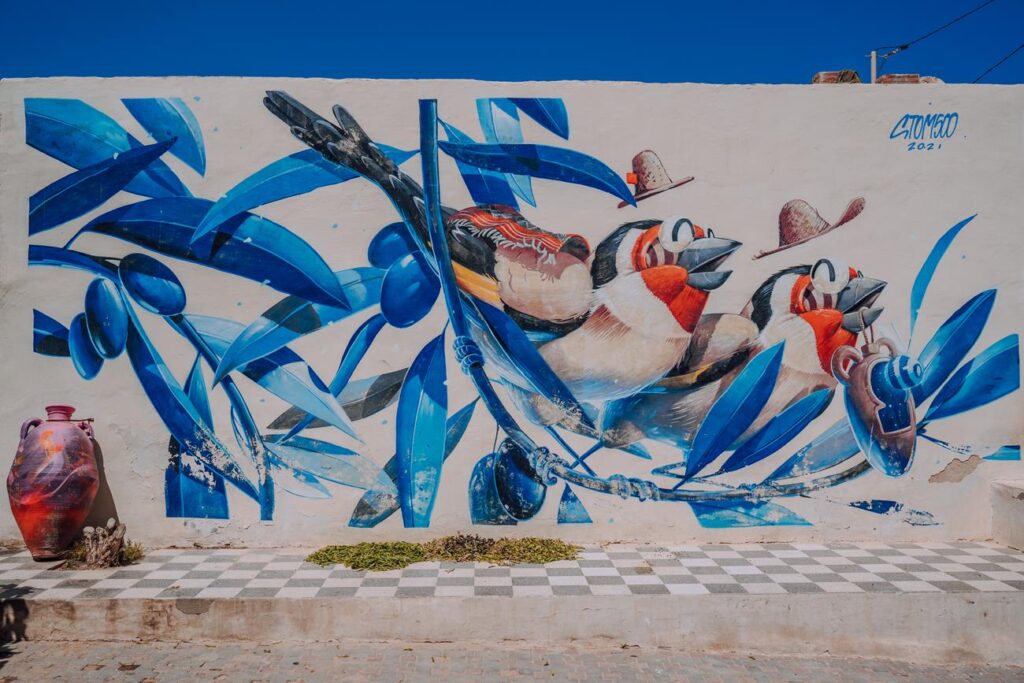
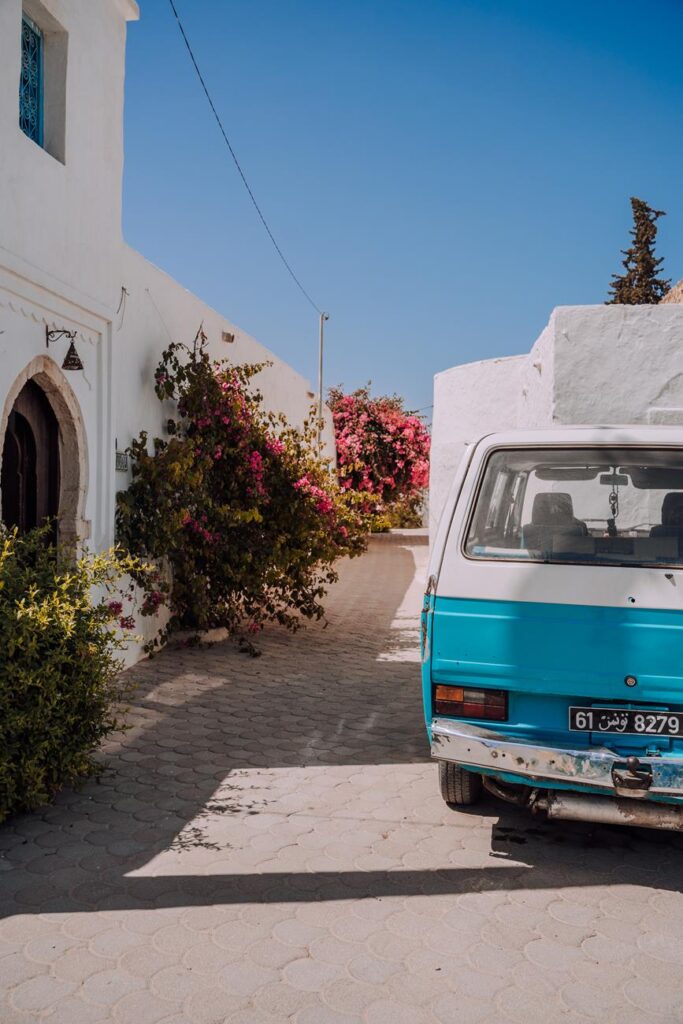
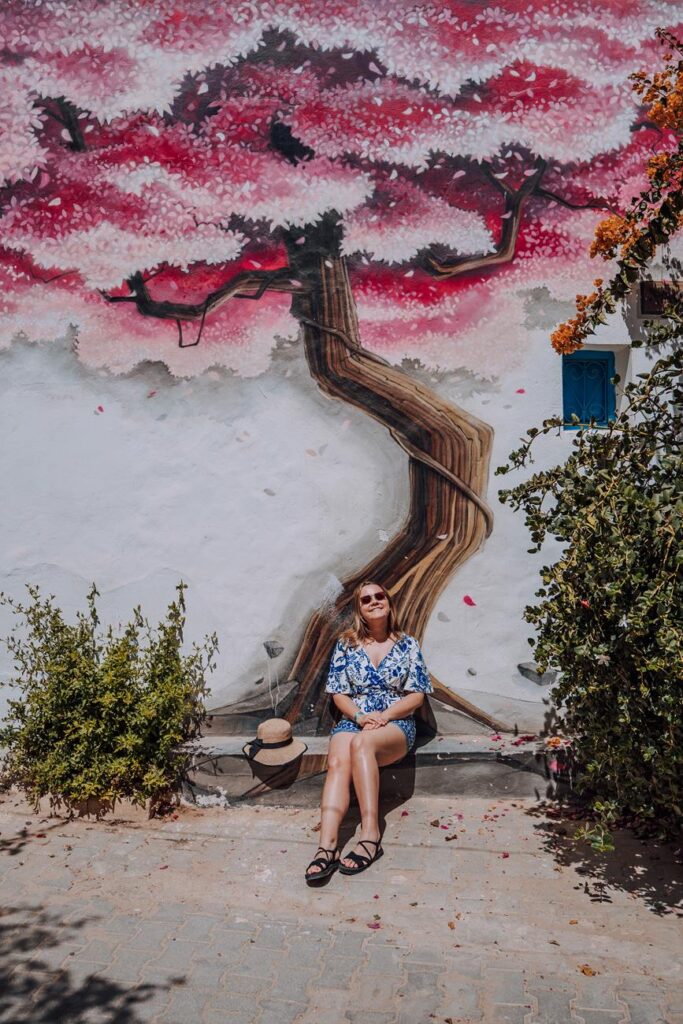
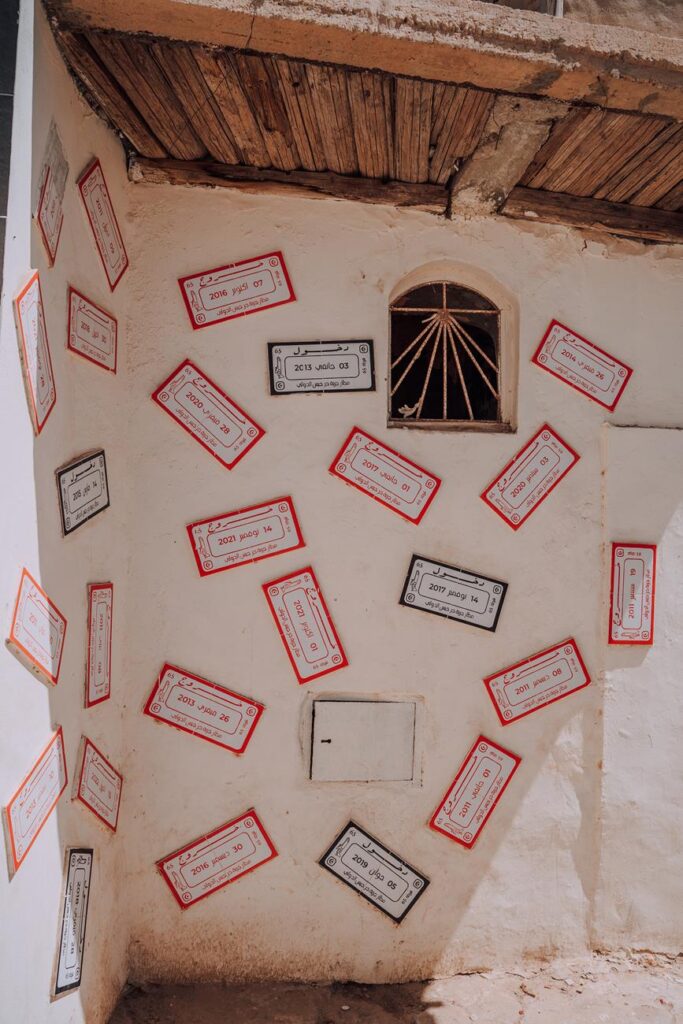
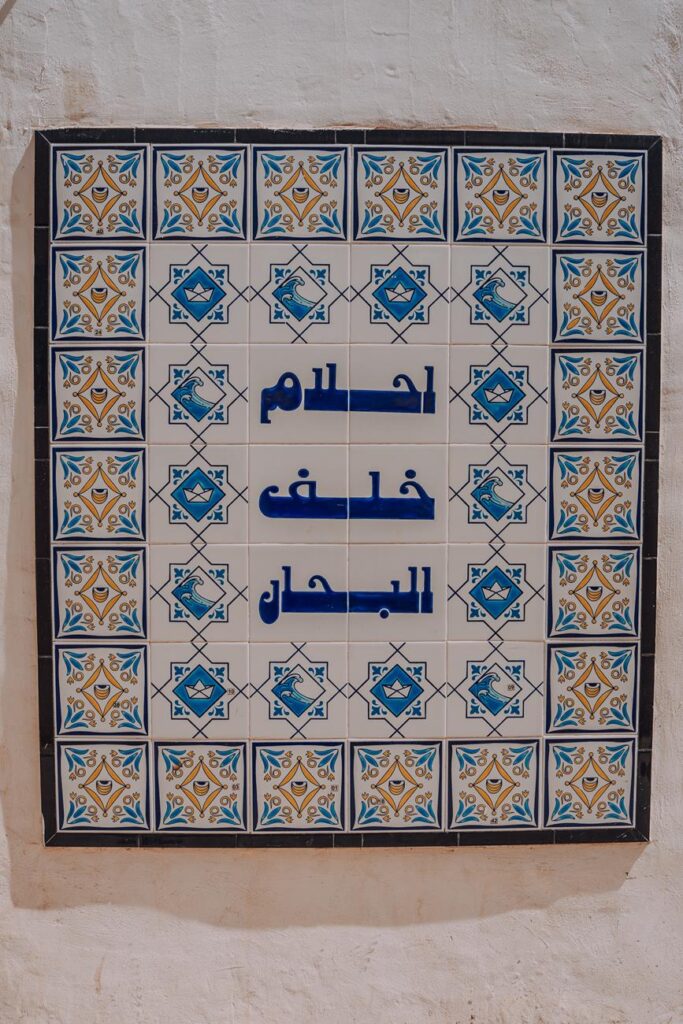
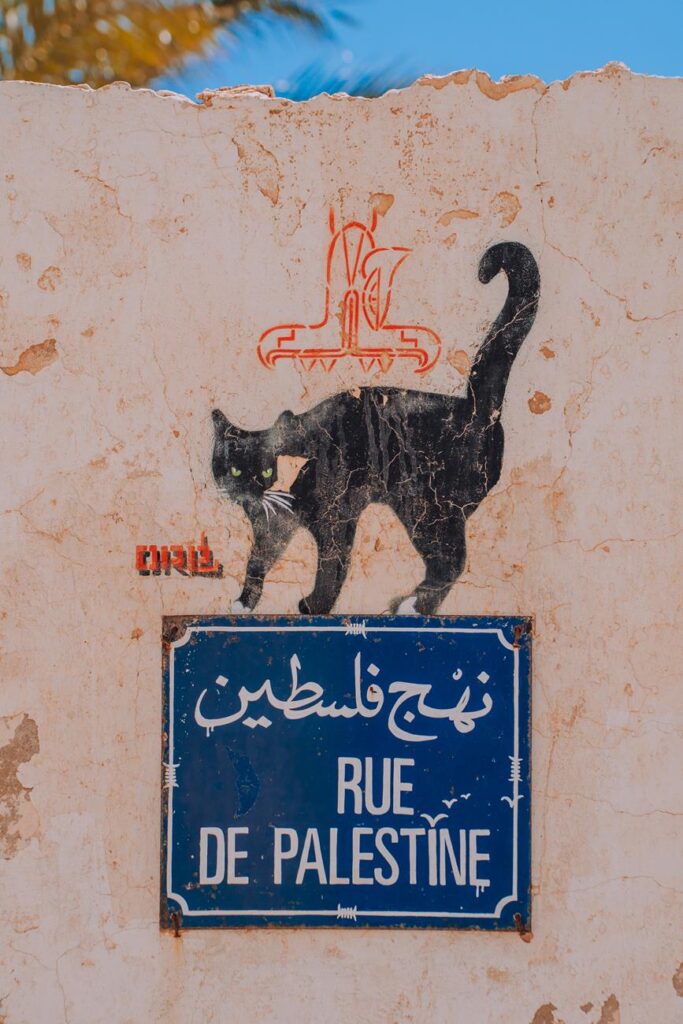
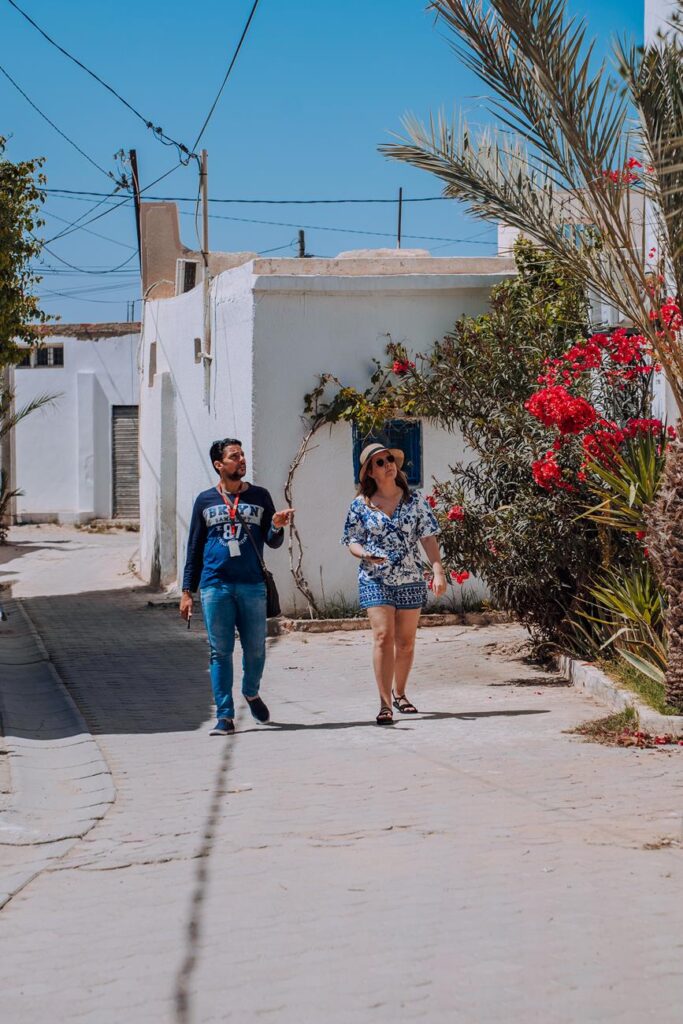
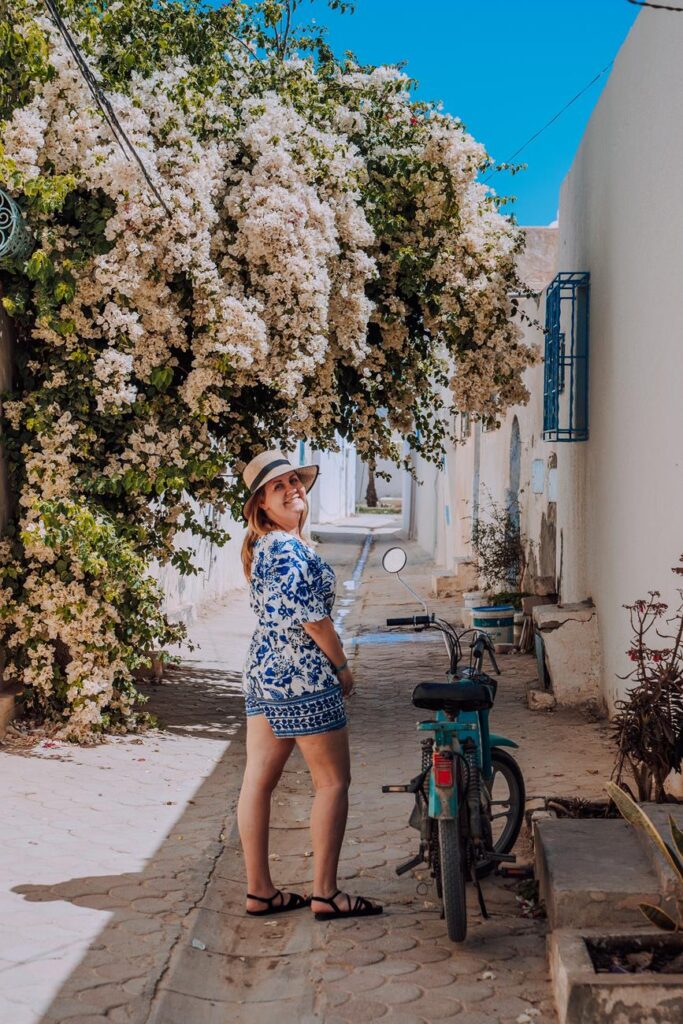
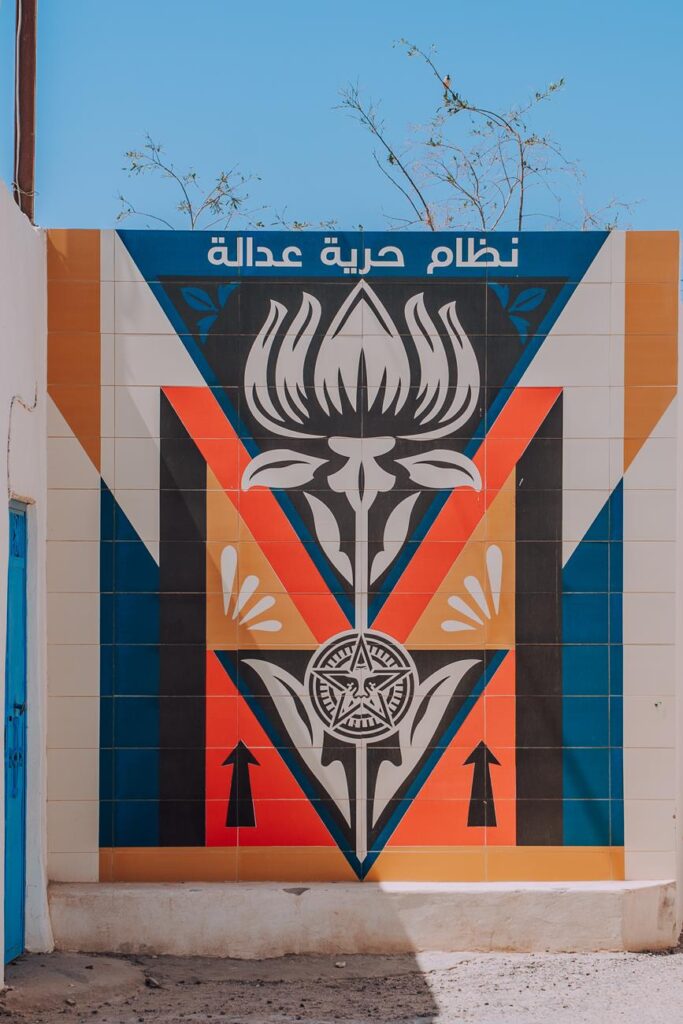
El-Ghriba Synagogue
The ancient El Ghriba synagogue, also known as the Djerba synagogue, is located in the Jewish village of Er-Riadh, a few kilometers from Houmt El Souk, the main town of Djerba. It is the oldest synagogue in Tunisia and most likely in the whole of Africa. Besides being an active and popular synagogue, it is also a place of pilgrimage, as one legend says that there is a stone from the Temple of Solomon in the building.
Thanks to the reconstruction visible today, the temple dates back to the 19th century, although it is much older in reality. The covered courtyard impresses with its decoration of colorful ceramic tiles. The prayer hall is adorned with blue columns supporting arches alternately painted in blue and white stripes. In the synagogue, you will also see stained glass windows and memorial plaques left by pilgrims.
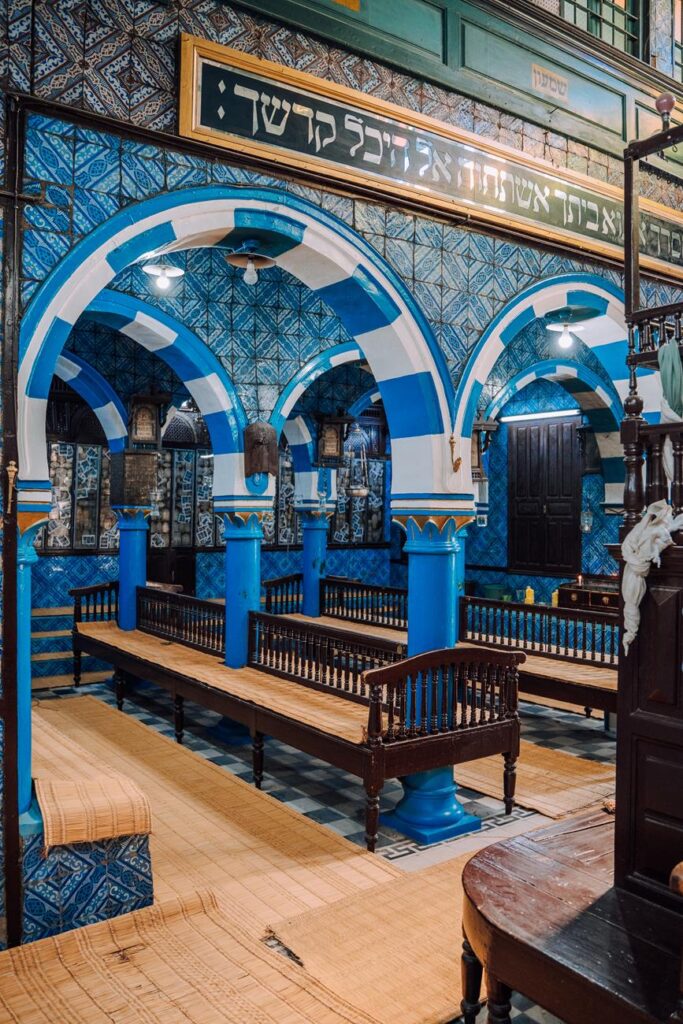
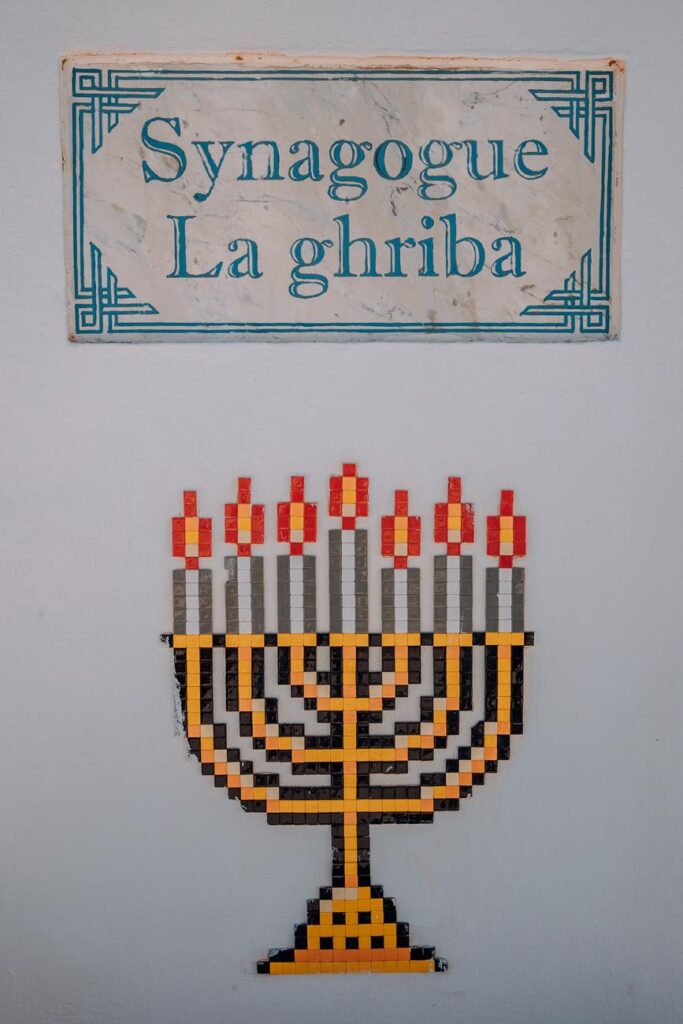
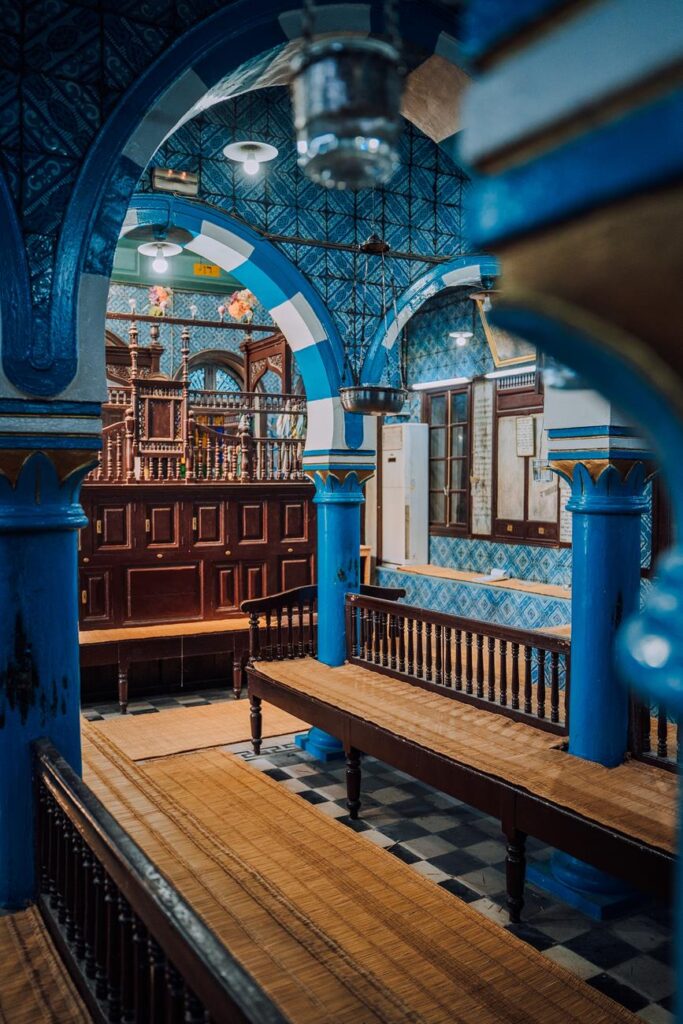
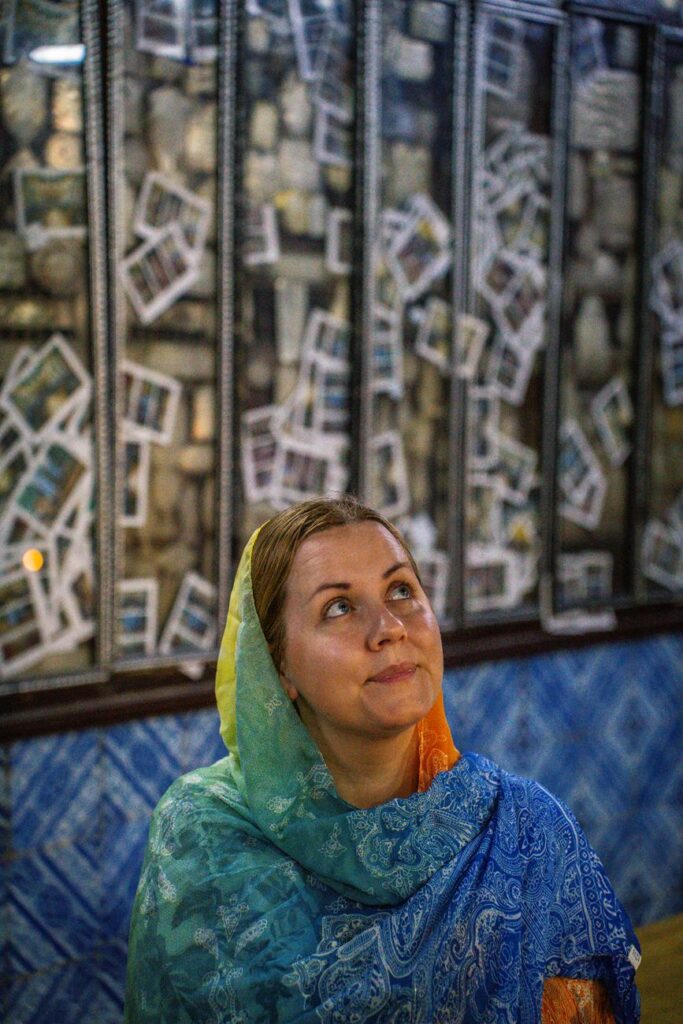
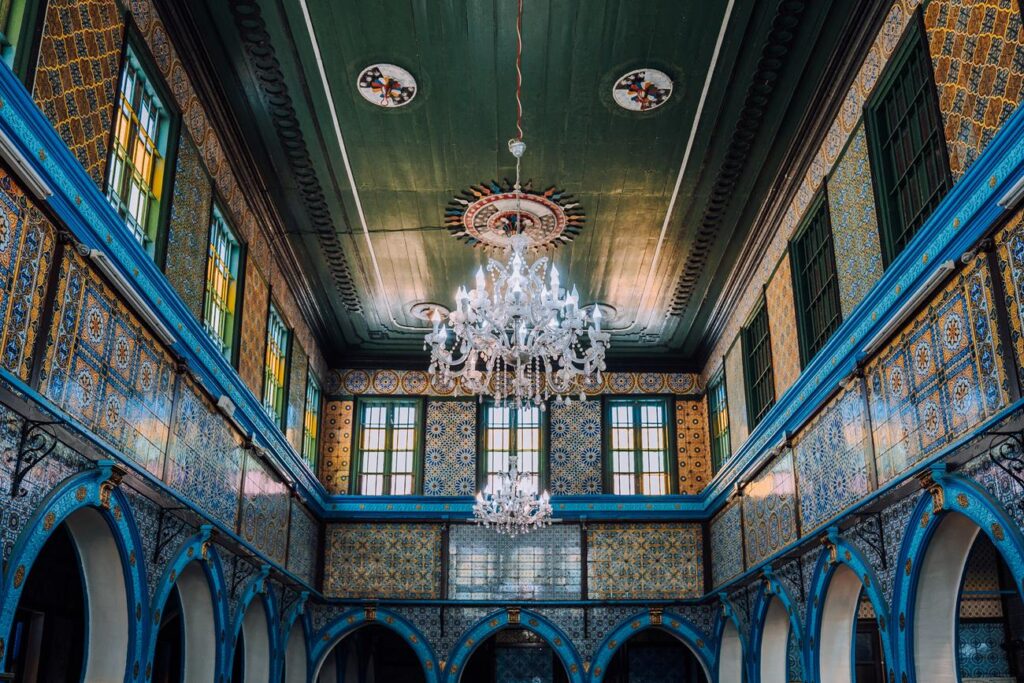
Houmt El Souk Market
When in Houmt El Souk, a visit to the local market is a must. It’s a place that’s always bustling with life. At the market, you can order fresh seafood or see firsthand how harissa (a traditional spicy paste made from peppers) is handcrafted. The mountains of various aromatic spices there are particularly impressive and worth stocking up on!
Sweet lovers will find fresh dates and artisanal halva there. If you’re interested in souvenirs, you’ll find plenty at the Houmt El Souk bazaar, mostly in the form of handicrafts and ceramic products. You can also get clothing or olive wood products.
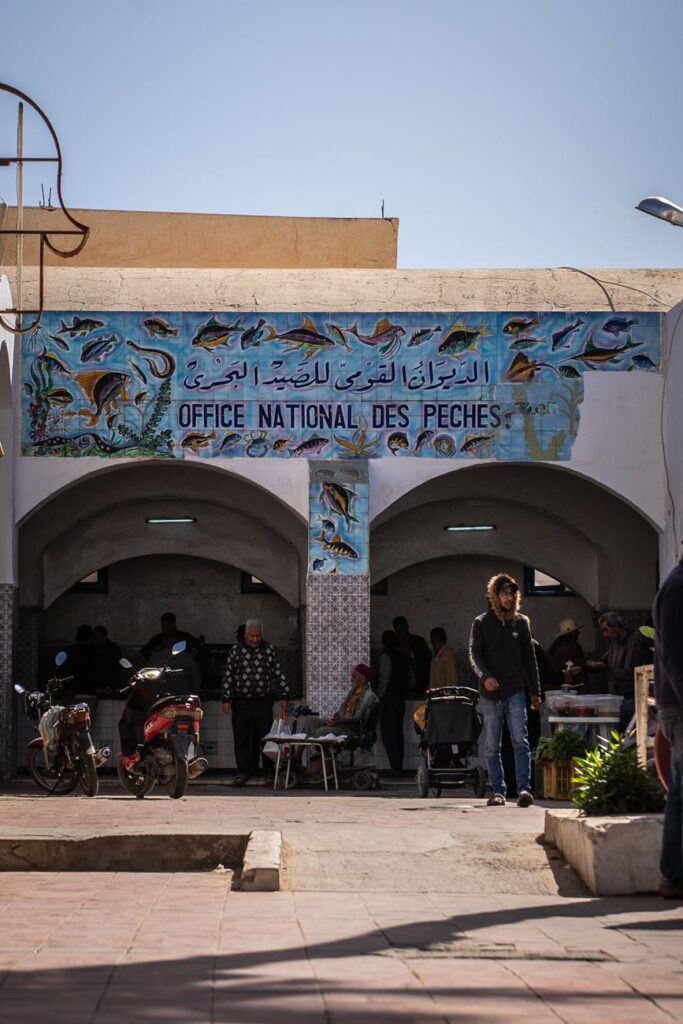
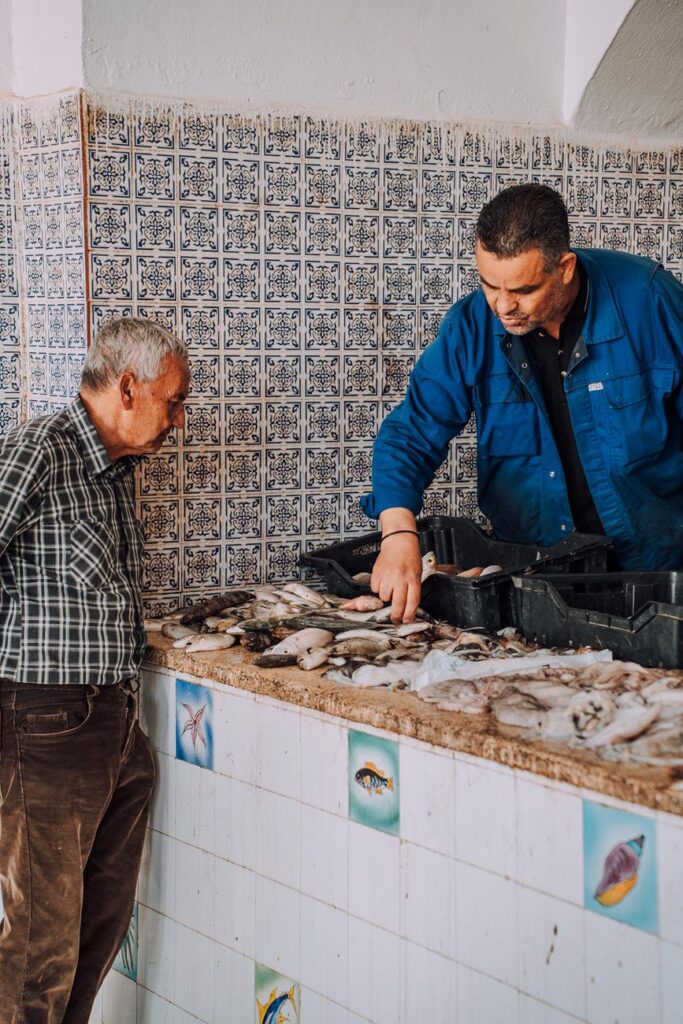
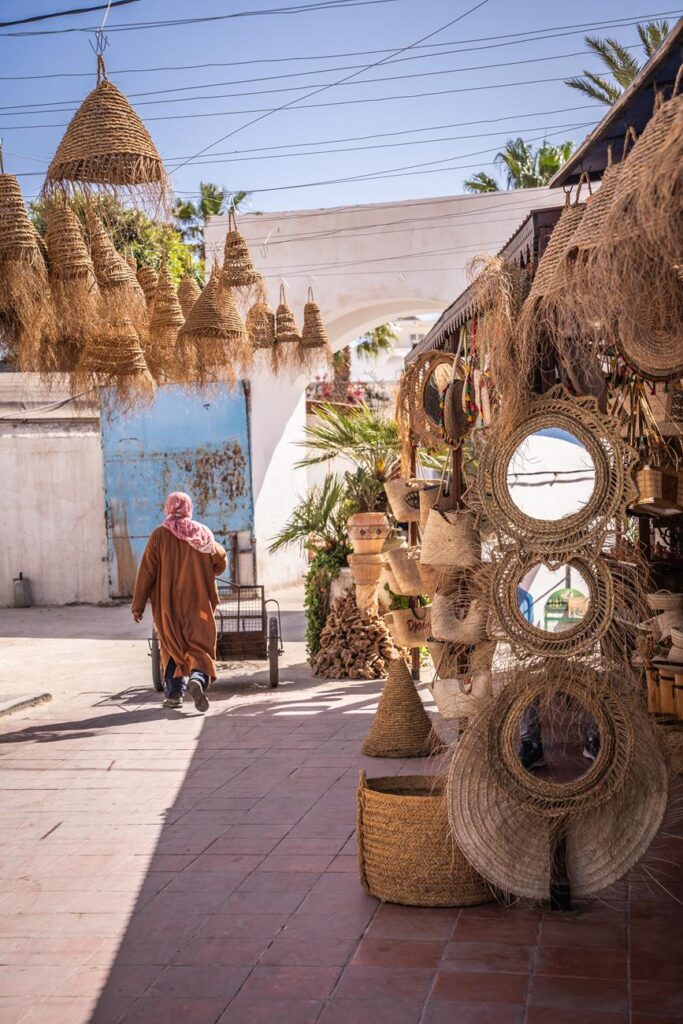
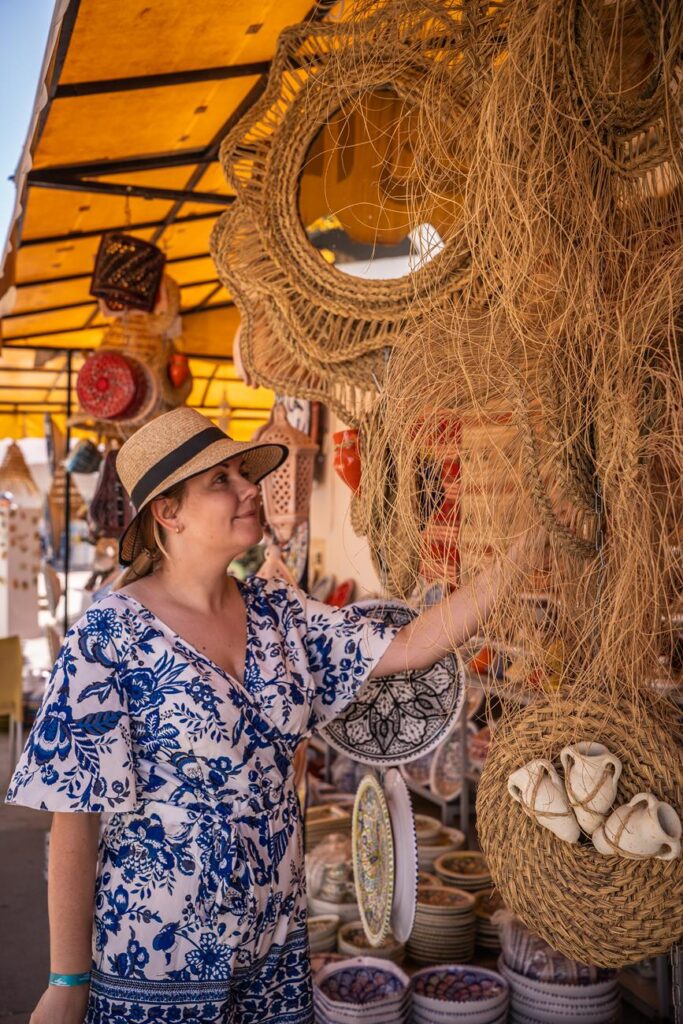
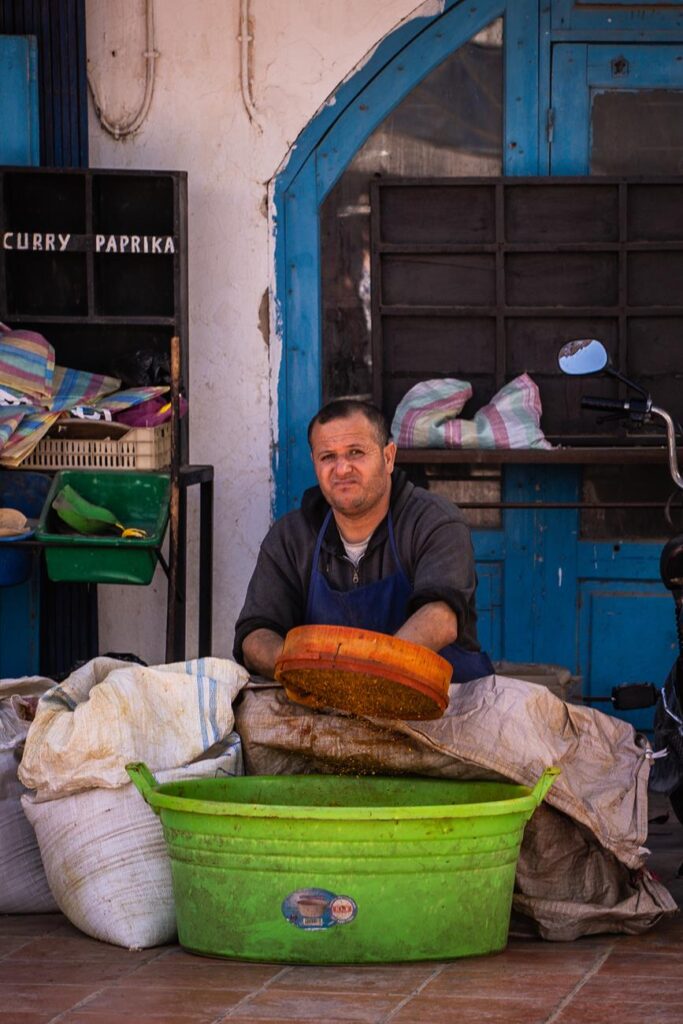
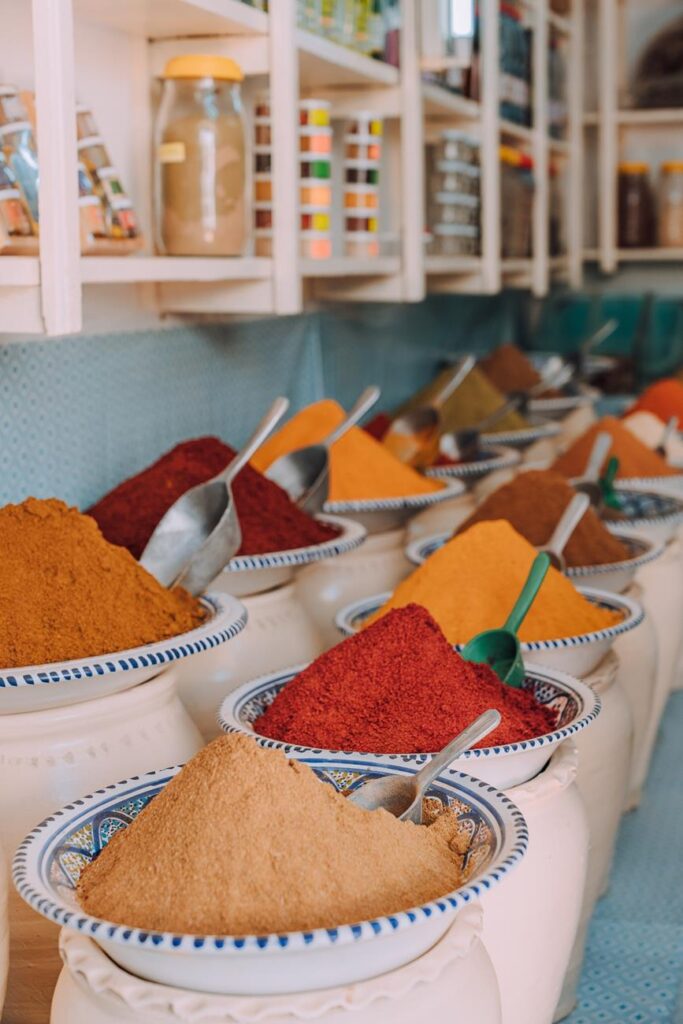
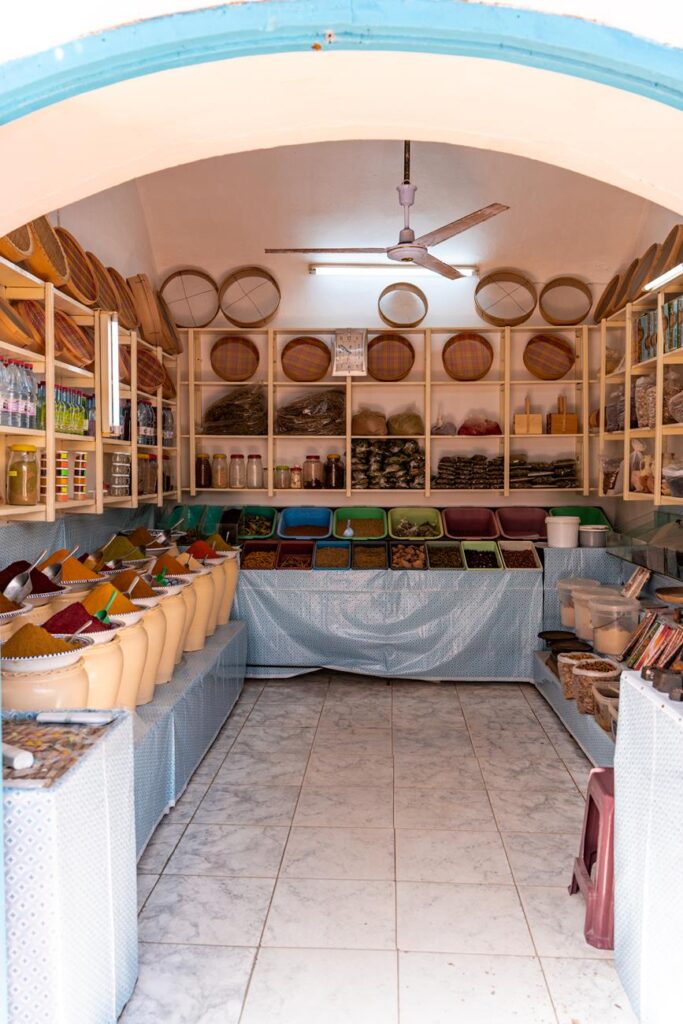
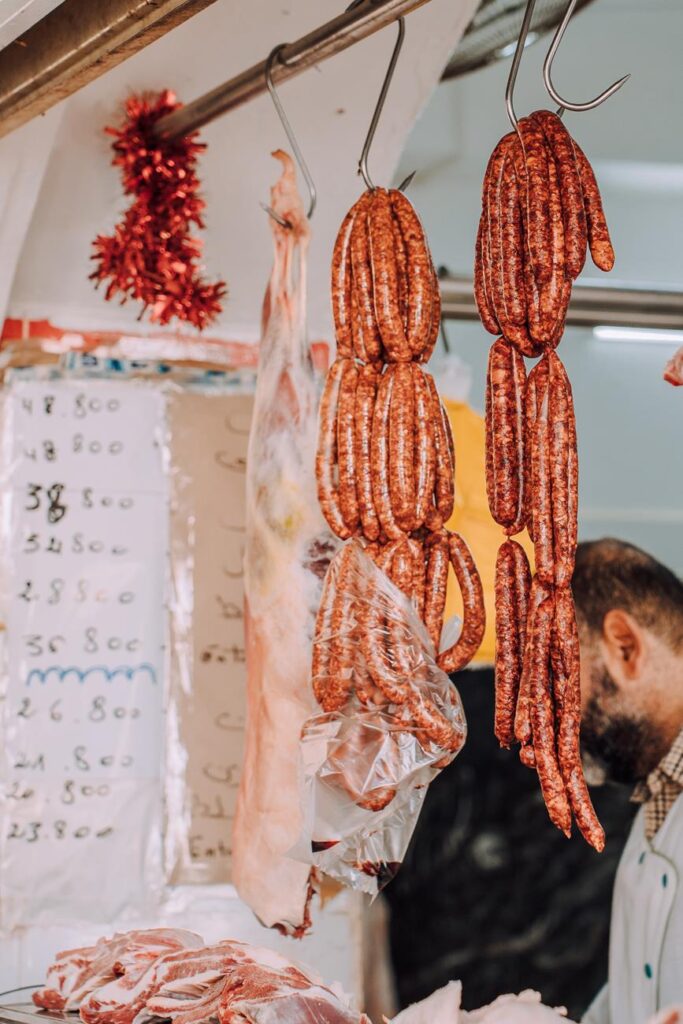
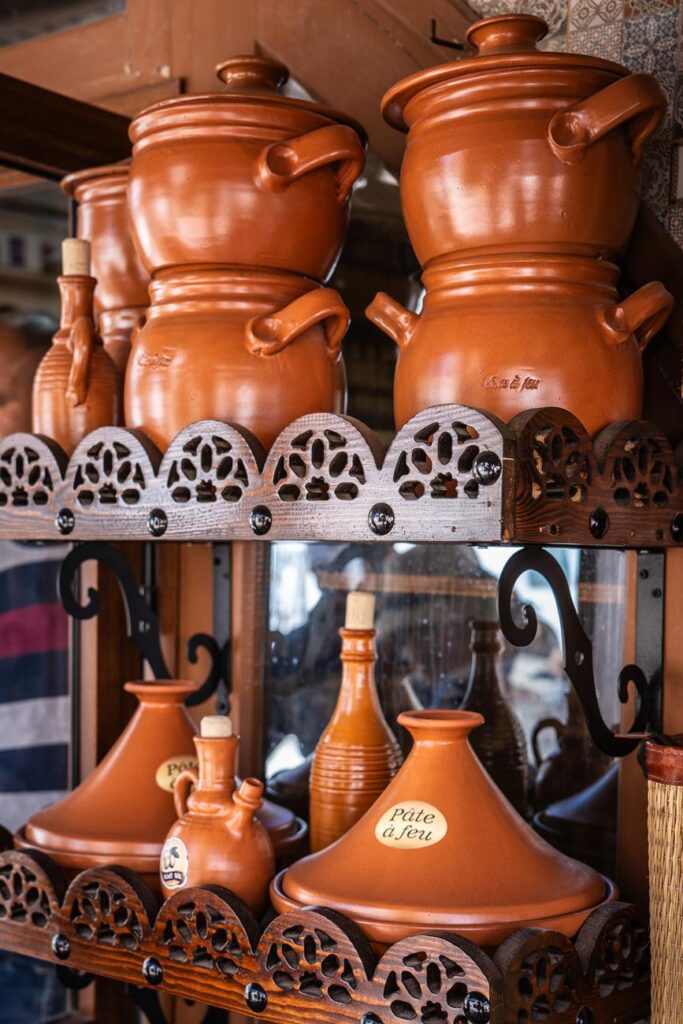
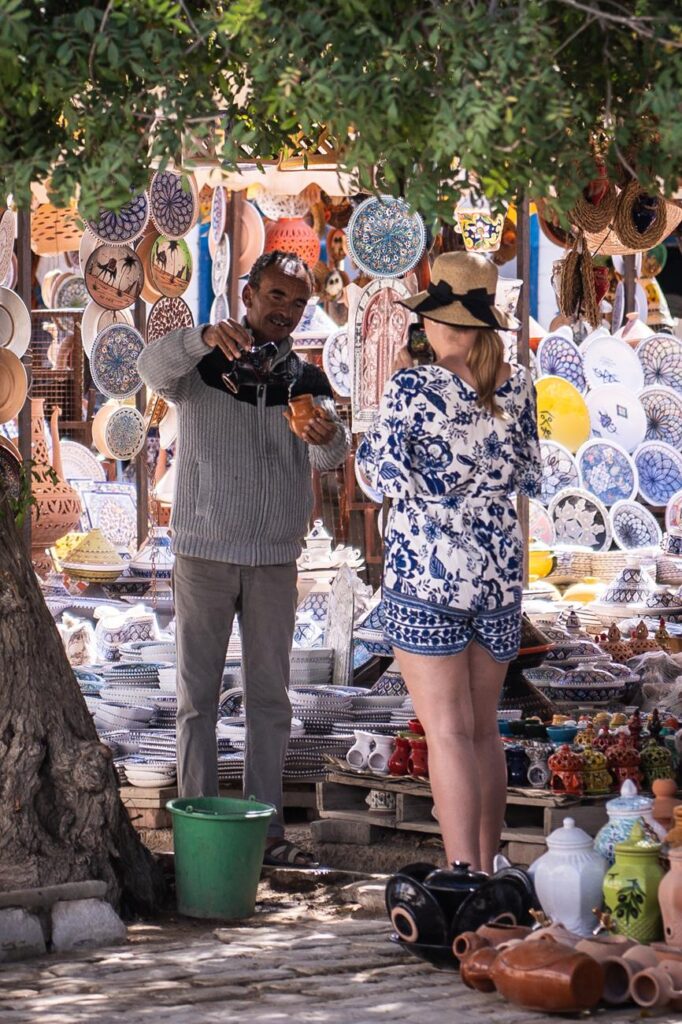
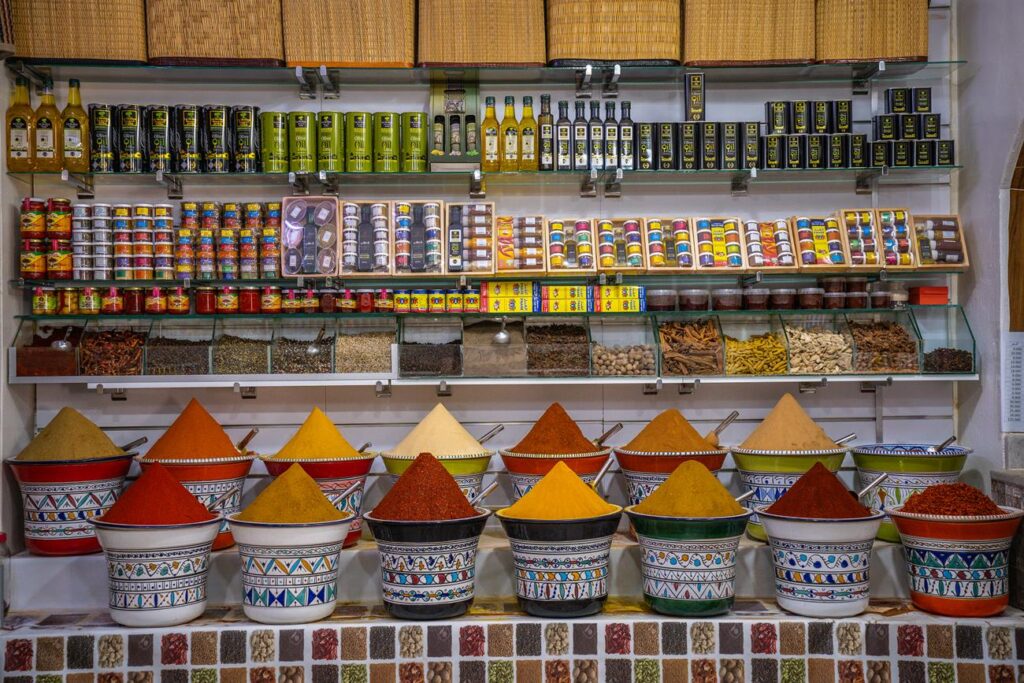
Borj El Kebir Fortress
Borj Ghazi Mustapha, also known as Borj El Kebir, is a fort located at the fishing port of the town of Houmt El Souk. It was built in 1289 by Roger de Loria, the admiral of Aragon and Sicily, on the site of the remains of a Roman fortress. In 1557, it underwent reconstruction commissioned by Turgut, a Turkish corsair and admiral of the Ottoman fleet.
Borj El Kebir was built in a rectangular plan. Both round and square towers are embedded in the walls. The entrance doors open onto a vestibule that once defended access to the courtyard. A small room, transformed into a museum, gathers various objects found within Borj Ghazi Mustapha during excavations, as well as explanatory plaques. The fortress offers a picturesque view of the sea.
From September 16 to the end of May, the fort is open from 9:30 am to 4:30 pm. From the beginning of June to mid-September, it is open from 8:00 am to 7:00 pm. Remember that on Fridays, the fort is not accessible to visitors! The entrance fee is 8 TND.
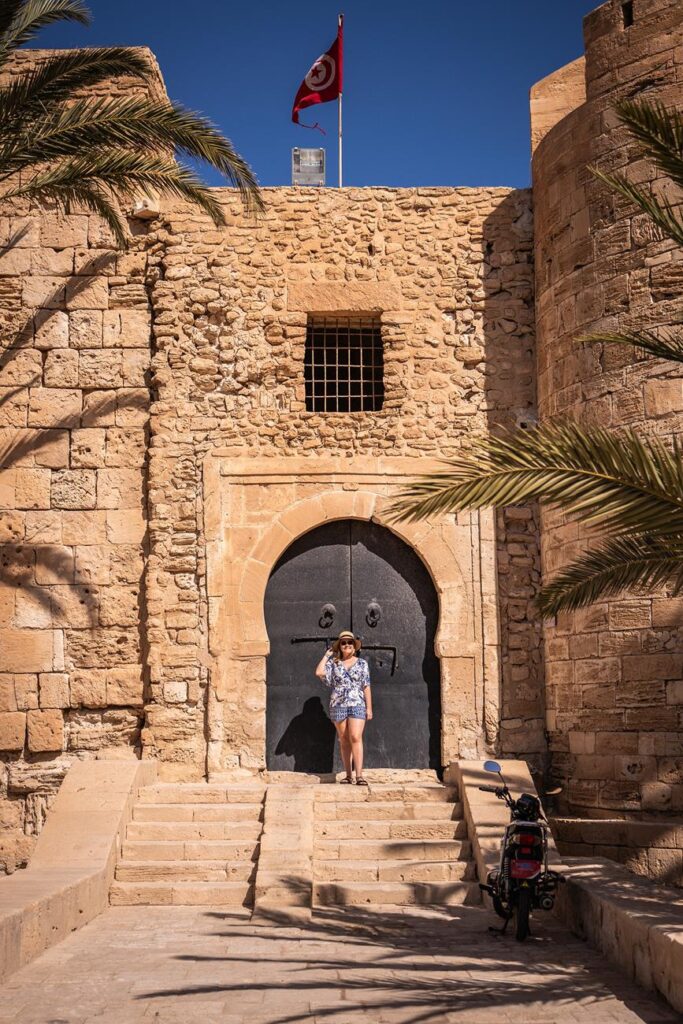
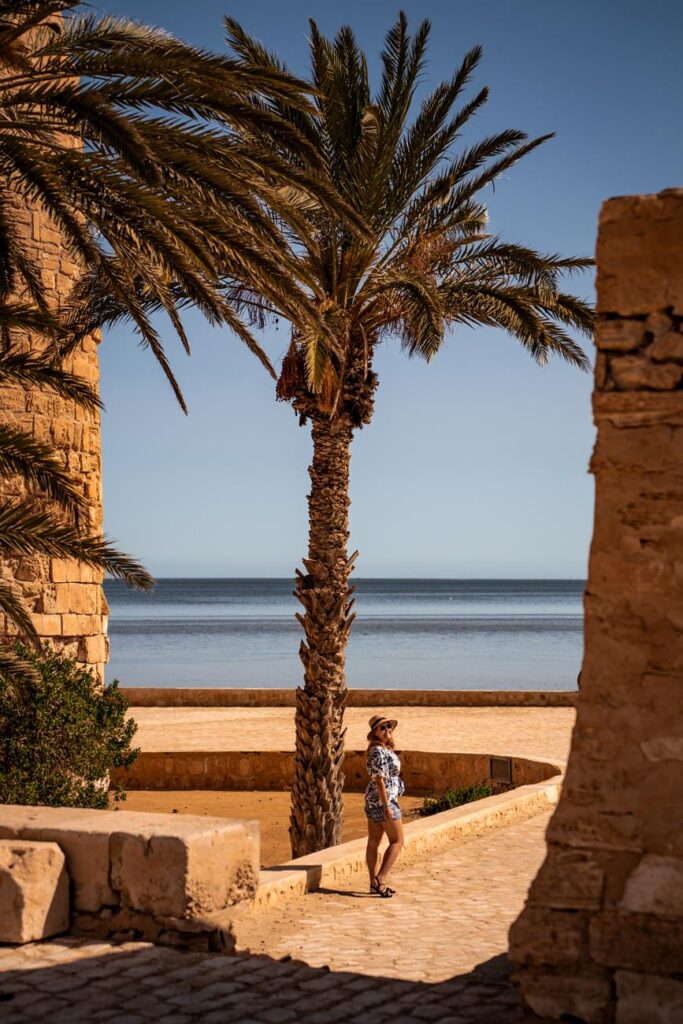
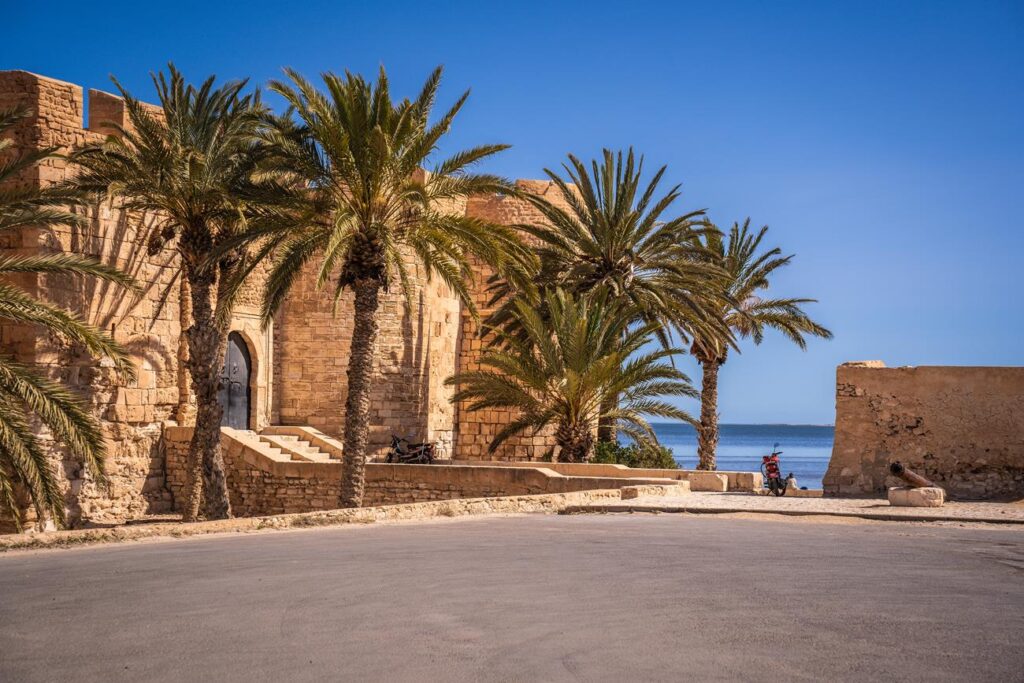
Sidi Yati Mosque
Sidi Yati Mosque is located on the southwestern coast of the island, in the village of El Fâhmîne. This small mosque was built in the early 10th century in memory of Khalaf Ibn Ahmad, also known as Sheikh Yati El Mistawi. It is one of the mosques that, besides being a place of worship, played an important role in the defense system of the time – it served as a watchtower, guarding the coast.
Today, the inactive mosque mainly consists of a courtyard, a prayer hall, and a tomb. Its walls are covered with a thick layer of white lime. And above all, it’s a brilliant place to admire the sunset!
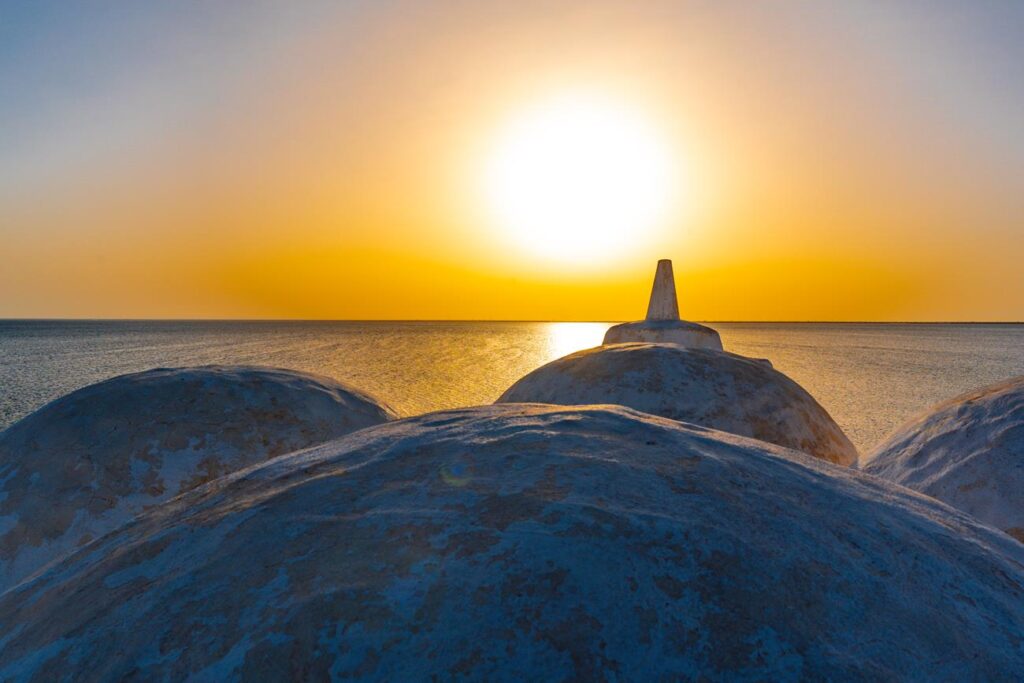
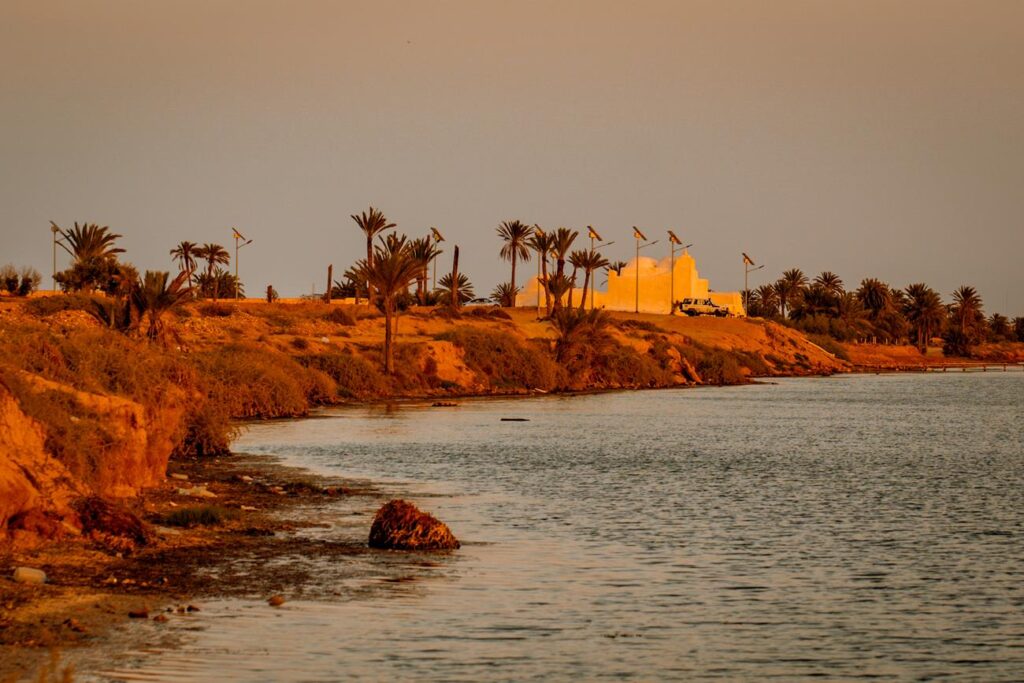
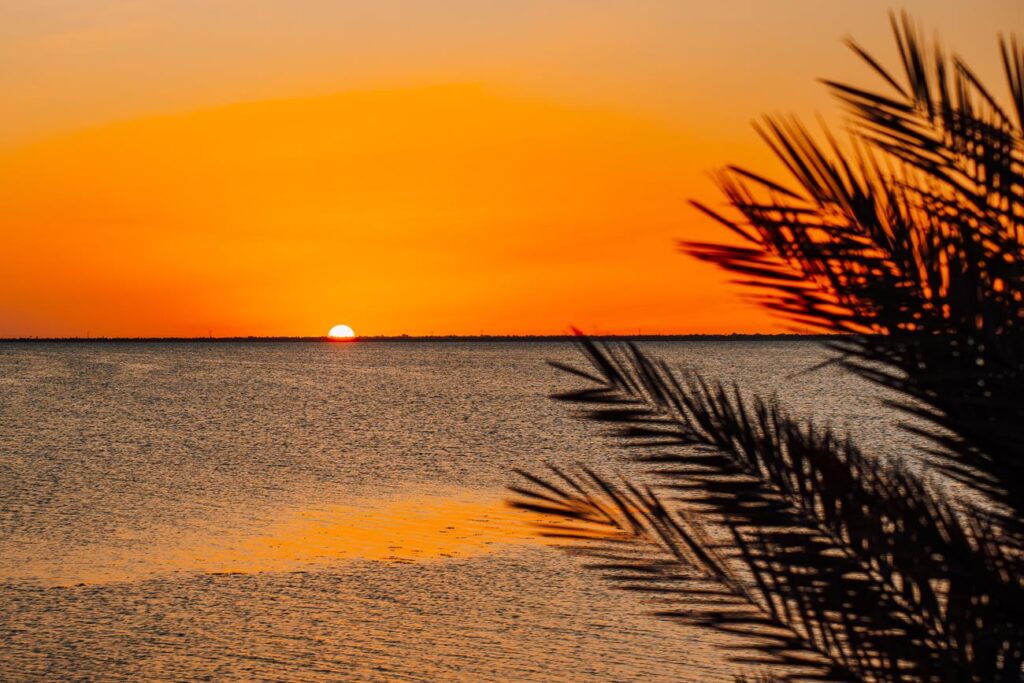
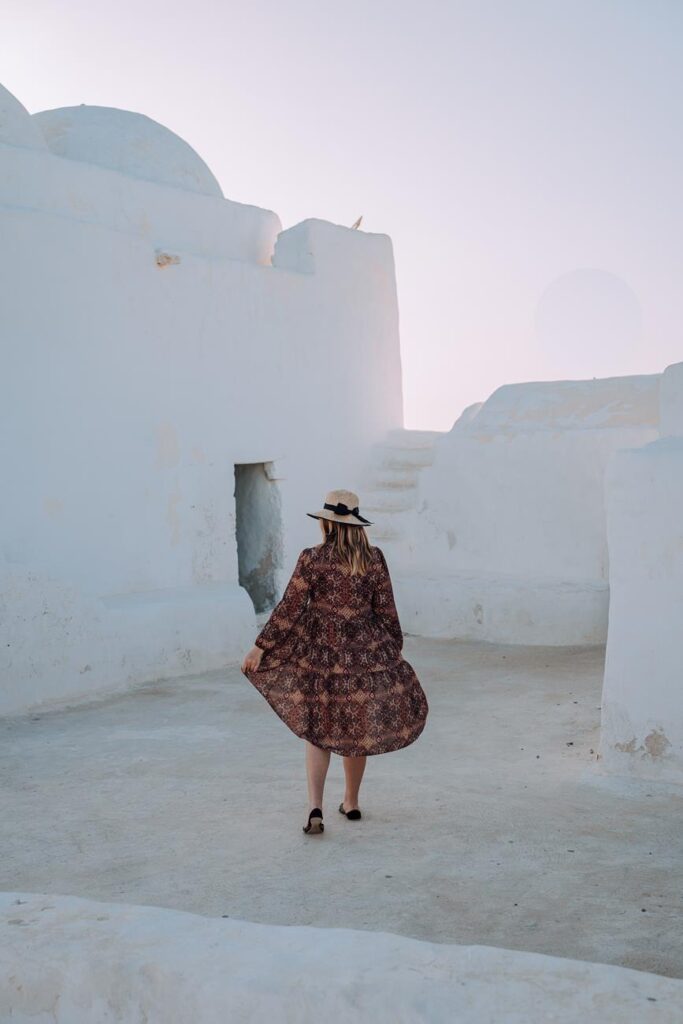
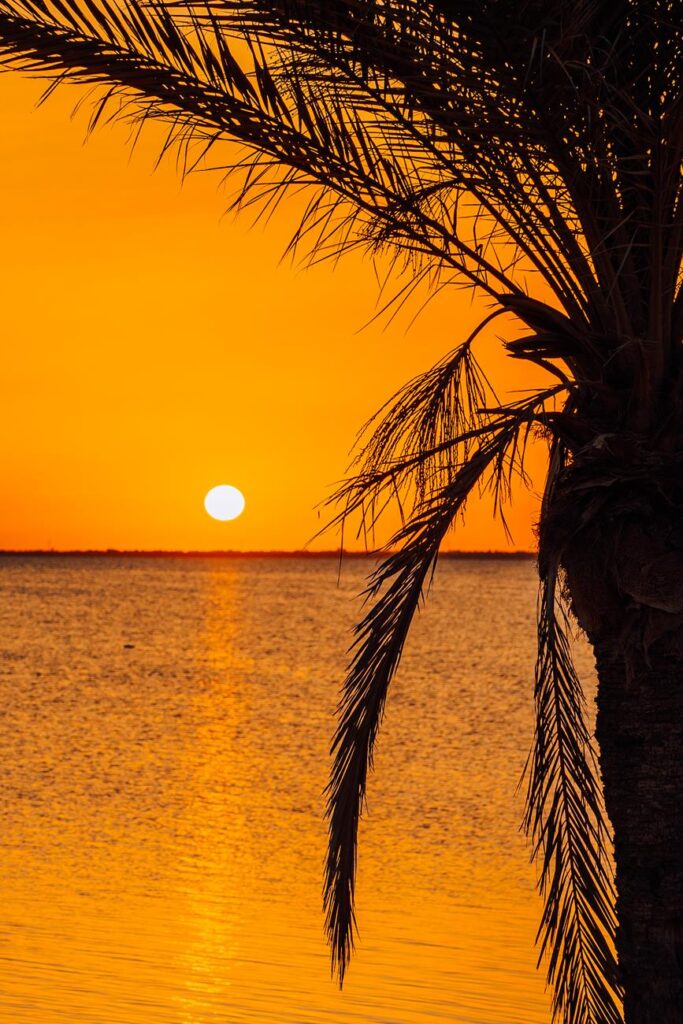
Kitesurfing
One of the sporting attractions of Djerba is kitesurfing. The Kiteworldwide station opened on the island in 2019. The shallow water of the lagoon with sandy bottom is ideal for beginners. Over 2/3 of windy days a year create exceptionally favorable conditions for kitesurfing, also for advanced riders. There is plenty of space along the coast for practicing this sport, so everyone will find their spot! For those interested, lessons with an instructor are available – you can take advantage of the school where Sylwia from Poland is an instructor.
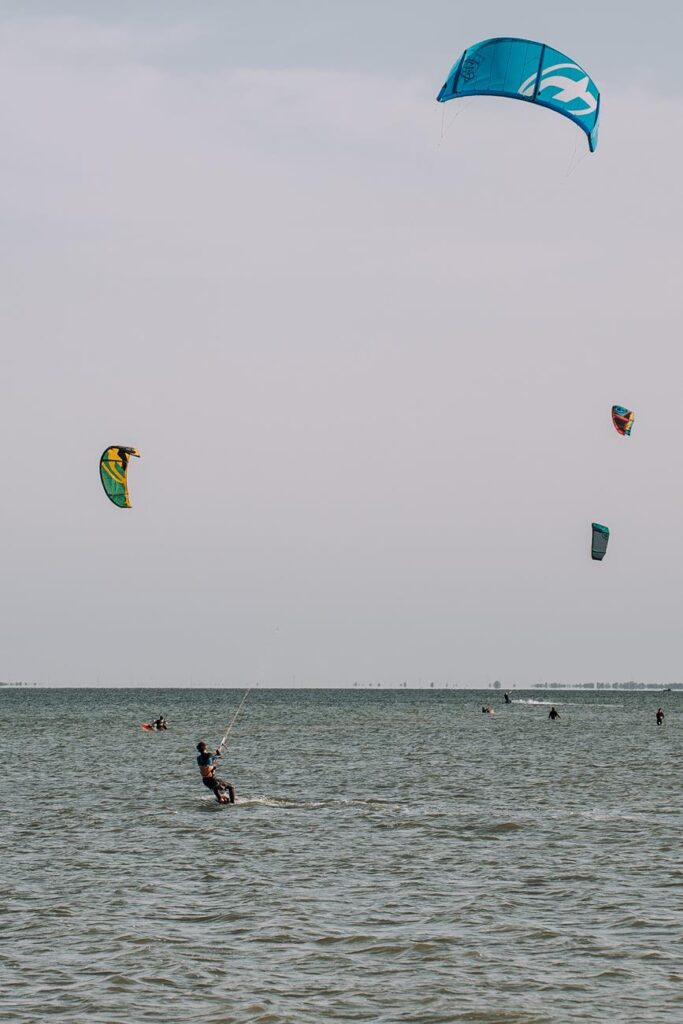
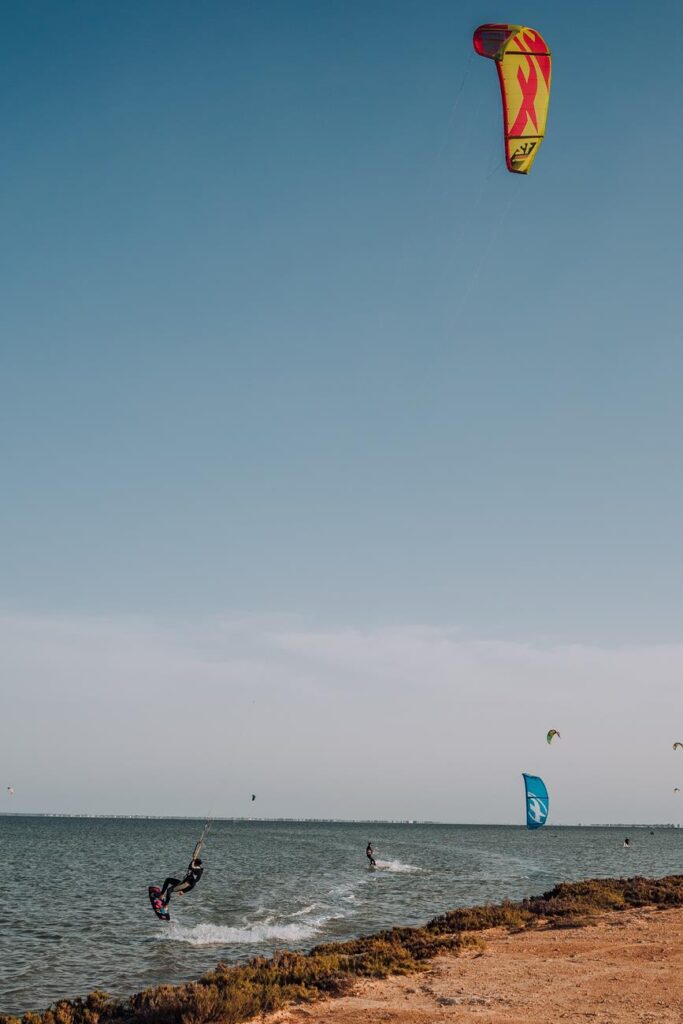
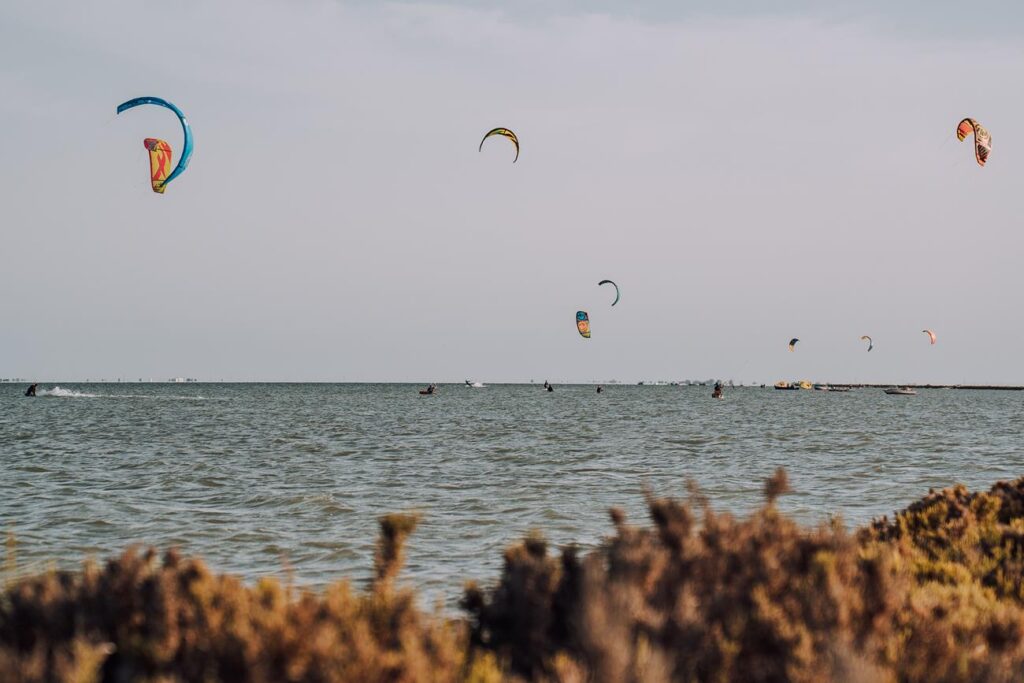
Guellala and pottery production
Guellala is a village located in the south of Djerba, which, thanks to its rich clay deposits, is famous for its ceramic products. You will find the most pottery workshops on the island there, which is evident at first glance because clay vessels line the squares and sidewalks and decorate the streets with their colors. The village also houses the Heritage Museum, which is worth seeing due to its interesting exhibits.
If you plan to visit the village, be sure to take a guided tour, as you will have the opportunity not only to see how pottery is made in a traditional workshop but also to try your hand at this difficult art under the guidance of a master!
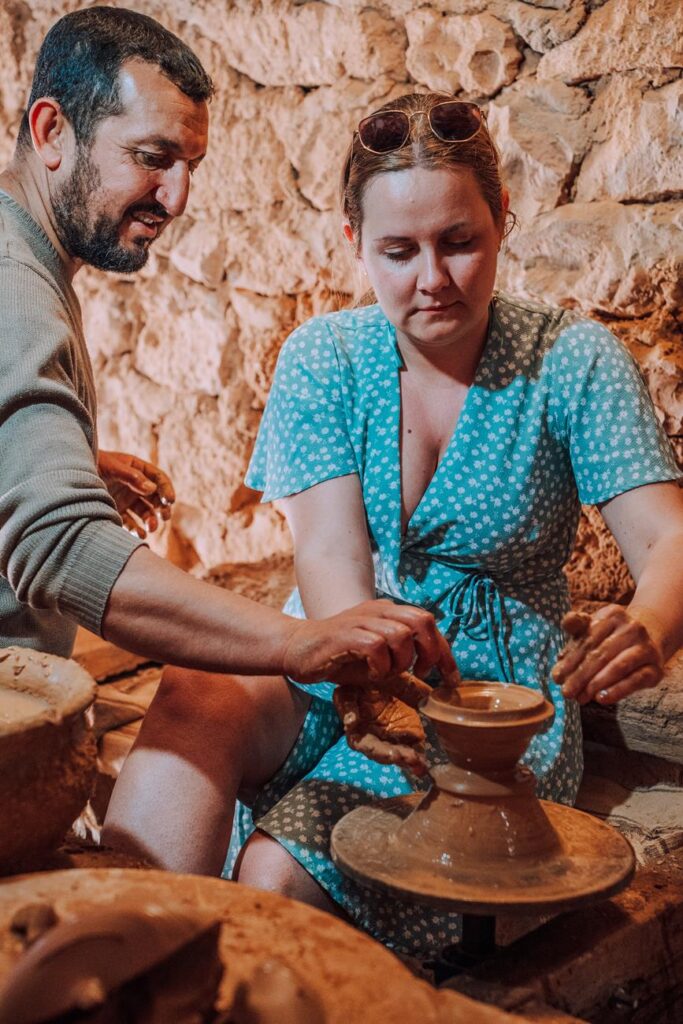
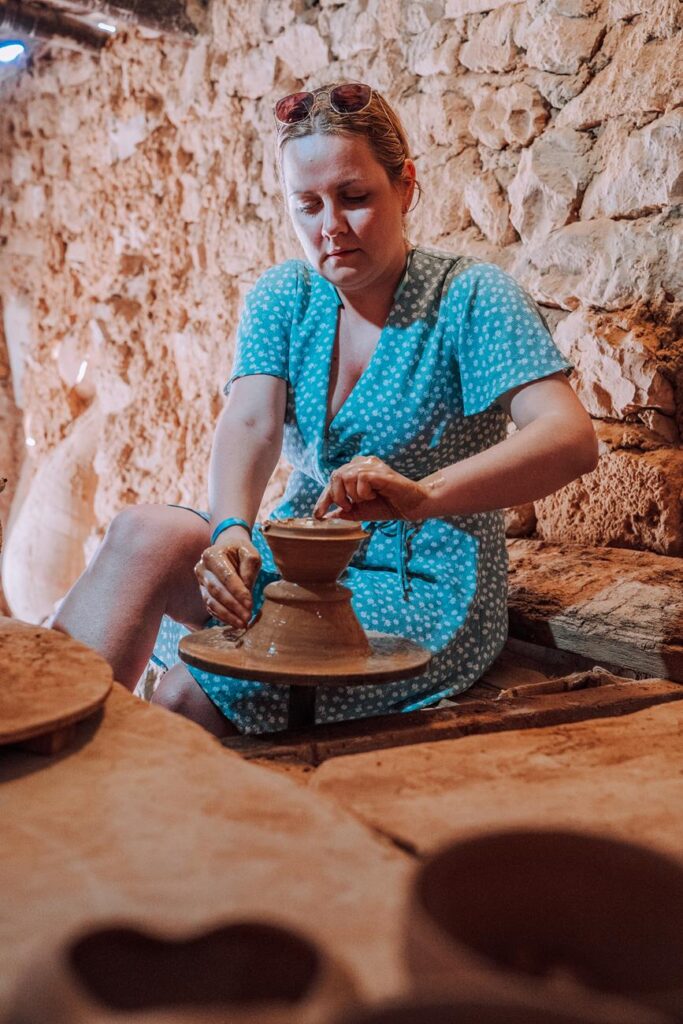
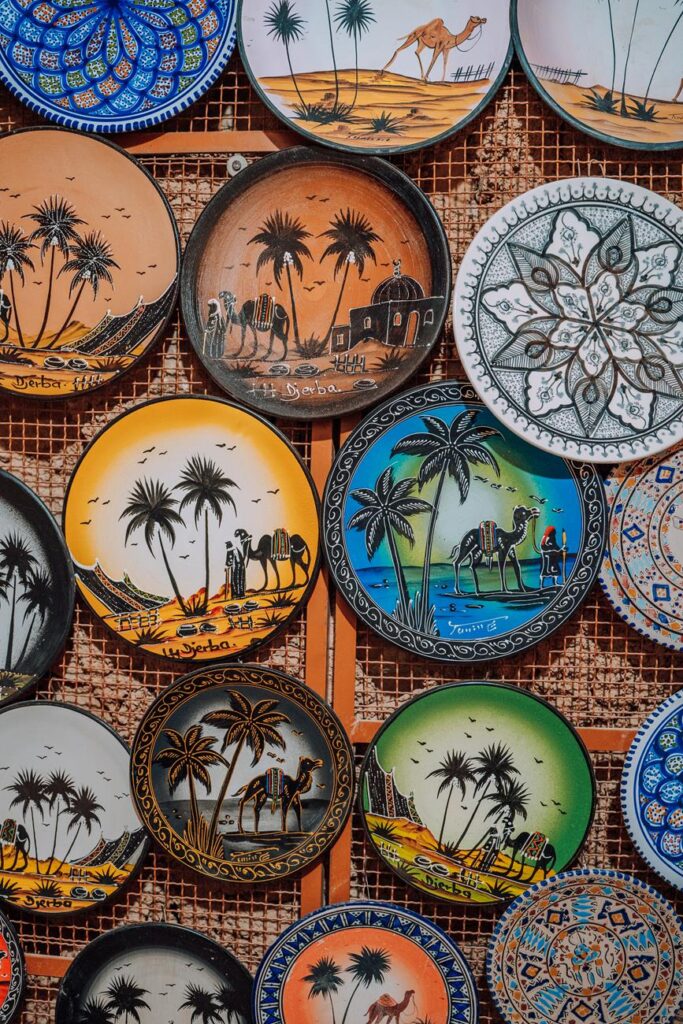
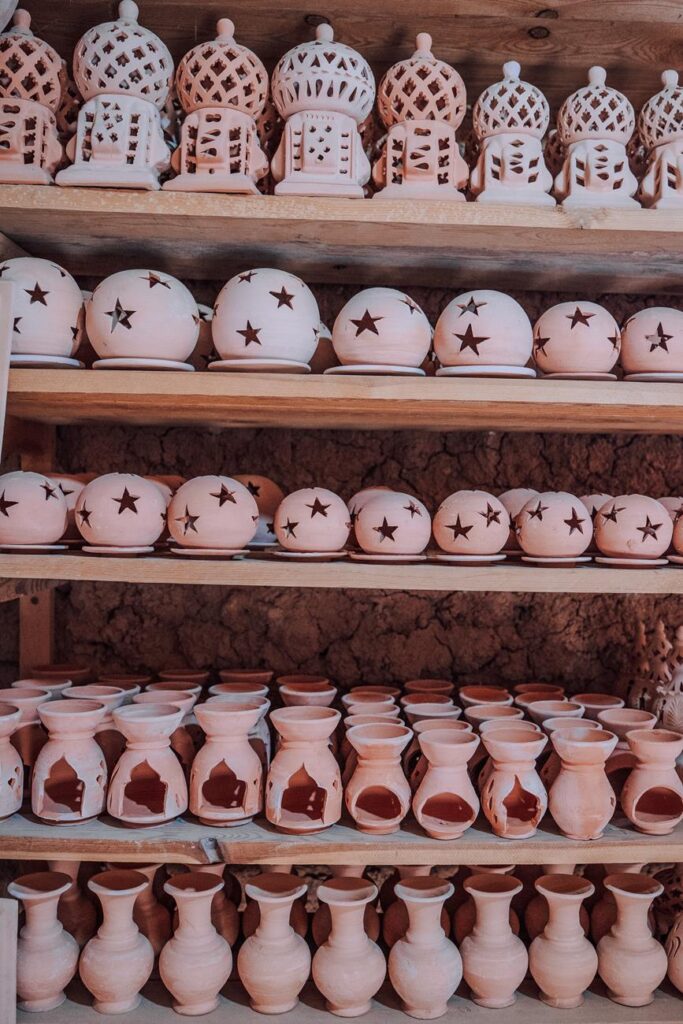
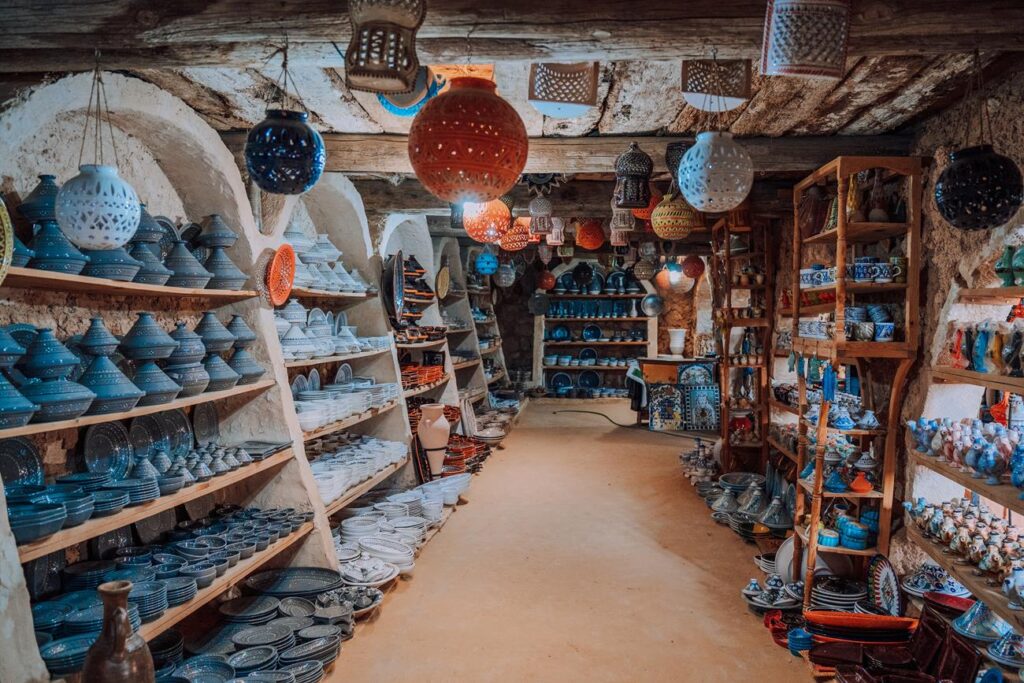
Crocodile Farm Djerba
Explore Park is one of the most popular tourist attractions on the island. It is located in the center of the town of Midun. It was opened in 2003 and is best known for its Crocodile Farm.
The aforementioned Farm covers an impressive area of 20,000 square meters and is the largest of its kind in the entire Mediterranean basin! In the ponds and tropical greenhouses, you will see up to 400 Nile crocodiles imported from Madagascar, swimming or basking in the sun. This species is one of the largest crocodile species in the world. You can catch shows with these impressive animals!
The visiting hours for the Crocodile Farm are as follows: from the beginning of July to the end of August, it is open from 9:00 am to 7:00 pm, and from September to the end of June – from 9:00 am to 6:00 pm. The admission fee for adults is 30 TND, and for children, it is 20 TND.
Flamingo Island
Ras Rmel is a long and sandy peninsula located in the southern part of Djerba, which is called “Flamingo Island”. Every year, from October to February, a lot of pink flamingos fly to the peninsula, wading in the surrounding lagoon. It’s a breathtaking sight! Besides flamingos, you can also spot other species of water birds there, such as cormorants and pelicans. With a bit of luck, you might also see dolphins!
Excavations in Meninx
The Meninx archaeological site is located on the southeastern coast of the island, near the town of Henchir El Kantara. It is two kilometers long and eight hundred meters wide. It represents the ruins of a city founded by the Phoenicians in the 10th century BC. During the Roman rule, the city of Meninx gained the status of a capital and became the political center of the island.
Admission to the excavation site is free. You will be able to admire numerous remains of marble columns and foundations, which once formed baths, a theater, a Roman forum, and an amphitheater.
Where to stay on Djerba?
I stayed at two hotels on Djerba. If I were to return to Djerba, I would have trouble choosing where to stay because I can recommend both places.
• Calimera Yati Beach is a hotel located on a sandy beach, with free sun loungers. It also has an outdoor pool and a restaurant serving mainly local cuisine. The choice is sufficient, with different dishes every day. There are animations, even out of season, table tennis, a beach bar. It has a friendly, holiday atmosphere. Free WiFi is available throughout the property. In the rooms, we can count on a bathtub (the second place I checked had only a shower). You can book directly through booking.
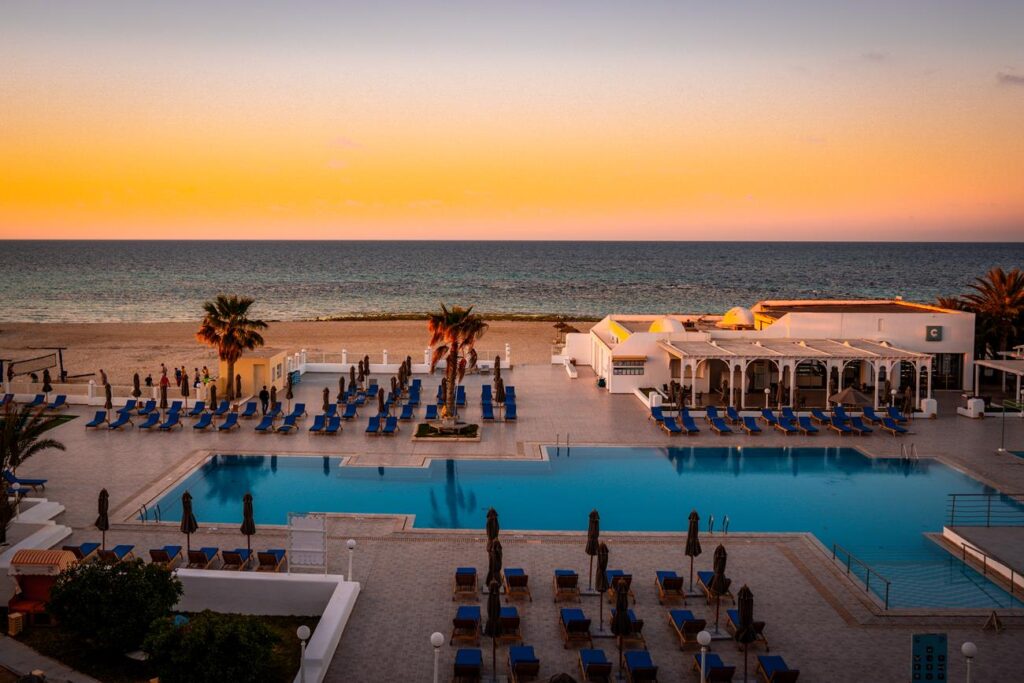
• Ulysse Djerba Thalasso & SPA is a five-star hotel in Houmt Souk, right on Mezraia Beach. It offers an outdoor pool (there is also an indoor one), a fitness center, and many great spa treatments. The rooms are air-conditioned with free WiFi. A wider choice of food than in Calimera Yati Beach. Guests can enjoy various attractions, such as a playground for children, table tennis, and darts. You can book directly through booking.
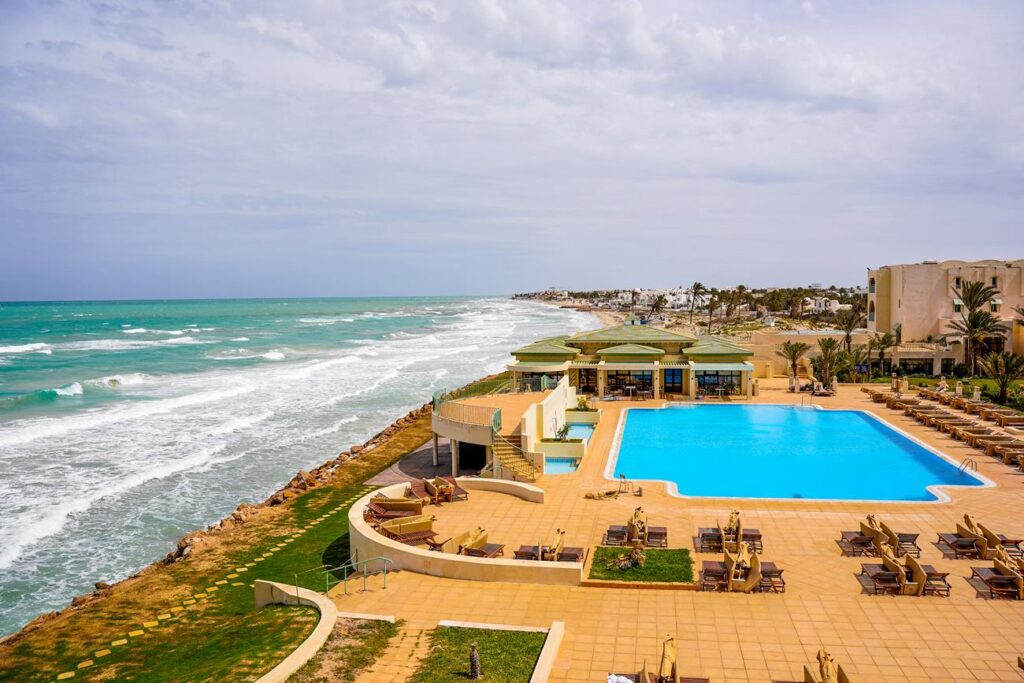
I explored Tunisia at the invitation of the Tunisian Tourism Organization. Thank you for the invitation [advertisement].